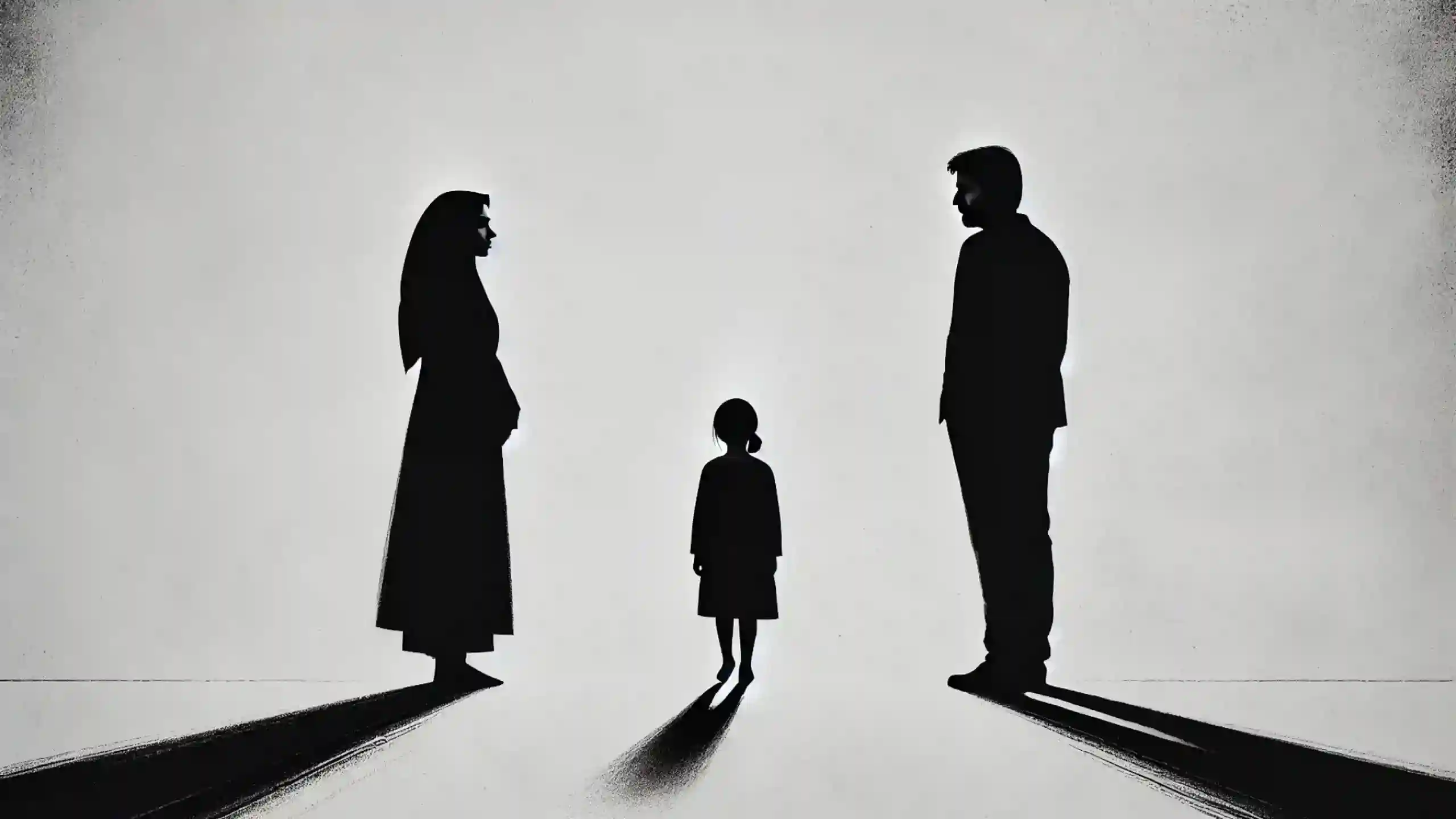
A Separation (Jodaeiye Nader Az Simin) Film Analysis
Asghar Farhadi’s film A Separation features an original screenplay that addresses upper-middle-class family relationships while offering a critical approach to the functioning of law and religion in Iran. With its aesthetic and critical approach, this film is regarded as Farhadi’s masterpiece.
With A Separation, Farhadi won the Golden Bear for “Best Film” at the 61st Berlin International Film Festival, a first for Iranian cinema. The film later also won the Academy Award for “Best Foreign Language Film”.
Content Features
Story
Nader and Simin are a couple on the verge of divorce. They have a daughter named Termeh. Nader and Simin start living separately until the second court hearing. Nader hires a pregnant caregiver named Razieh to look after his father. After starting the job, Razieh has an accident, which harms Nader’s father. Upon learning of the incident, Nader pushes Razieh out of the house. Following this event, Razieh is taken to the hospital and suffers a miscarriage, leading the case to court. After a while, both parties agree on blood money. However, the blood money is not paid because Razieh has doubts about Nader’s guilt. After all this, Nader and Simin attend the second hearing of their divorce case. The film’s story ends with the question of who Termeh will live with.
Since Termeh’s decision is not shown at the end of the film, we can say that the story form is open-ended. Additionally, we see the story progressing on two different planes. In the film, the stories of the families of Nader, Simin, Termeh, and Hodjat, Razieh, Somayeh are processed simultaneously. Looking at the narrative style, we can say that the story progresses linearly.
Plot
Simin wants to go abroad because she wants her daughter Termeh to live in better conditions. Her husband Nader does not want to leave his Alzheimer’s-afflicted father alone and is thus forced to divorce Simin. During this process, Simin leaves the house. Nader hires a caregiver named Razieh for his father. Razieh is a pregnant woman who has taken this job without her husband Hodjat’s permission. One day, while Razieh is taking care of Nader’s father, he wanders out into the street. Razieh follows him, has a traffic accident, and loses her child. The next day, Razieh ties Nader’s father to the bed and goes to the hospital. When Nader comes home and sees his father’s condition, he pushes Razieh out of the house. After this push, Razieh goes to the hospital again, and it is learned that she has miscarried. The couple, on the brink of divorce, goes to the hospital, and the case ends up in court. In this court, both parties have valid reasons. The situation is resolved when it becomes clear that Razieh has doubts about whether she lost her child because Nader pushed her. Both families and the creditors gather at Hodjat and Razieh’s house for the blood money payment. Razieh’s hesitation comes to light, and it is understood that Nader is innocent. After all this, in Nader and Simin’s divorce case, the judge asks Termeh who she will live with. Nader and Simin leave the courtroom and wait for the answer.
The film’s plot is built on a cause-and-effect principle, with each event following the other. The only gap in the plot is the scene where Razieh has the accident. Asghar Farhadi, just as in the screenplay for About Elly, creates a mystery by not showing this scene. This mystery is vital for the film’s dramatic structure. Otherwise, the audience would realize Nader’s innocence too early.
Theme
The main theme of A Separation is as follows: “In a society where the economy, law, and social statuses do not function correctly, it is not possible for people to build their identities, have a good family life, and adapt to society.” The problems of both families in the film are rooted in this situation.
The dilemma Nader finds himself in is another important theme of the film: “It is not easy for people to leave their family and the place where they were born and raised, no matter how bad the conditions are.” Based on these two themes, it can be said: “People living in poor conditions either have to stay and fight a great battle or leave everything behind (destroy it) and go their own way.”
Another theme can be expressed through class conflict: “A class conflict arises between people who do not have equal living conditions.” The character in whom this theme is embodied is Hodjat:
“Hodjat: Why should I be quiet? So they can take what’s mine? I worked in a shoe repair shop for ten years. They fired me and said, ‘go get your rights if you can.’ I filed a lawsuit and went back and forth for a year. In the end, nothing. They told me to go sit at home. But I won’t give up this time. This time it’s different. I have nothing to lose! My problem is that I can’t talk like this man (Nader).”[^1]
Another theme is expressed through the character of Termeh: “It is not possible for parents to give up their children, nor for a child to choose between their mother and father.”
Characters
In the film’s character design, an asymmetrical relationship is established in terms of class. The characters Simin, Nader, and Termeh are secular characters belonging to the middle class. Razieh, Hodjat, and Somayeh are traditional characters belonging to the lower class. This asymmetry is seen in every layer of the film, especially in the characters’ relationships with each other. The common feature of these characters from two different classes is that they live under the same poor social conditions. Therefore, all characters can be seen as victims crushed under social conditions.
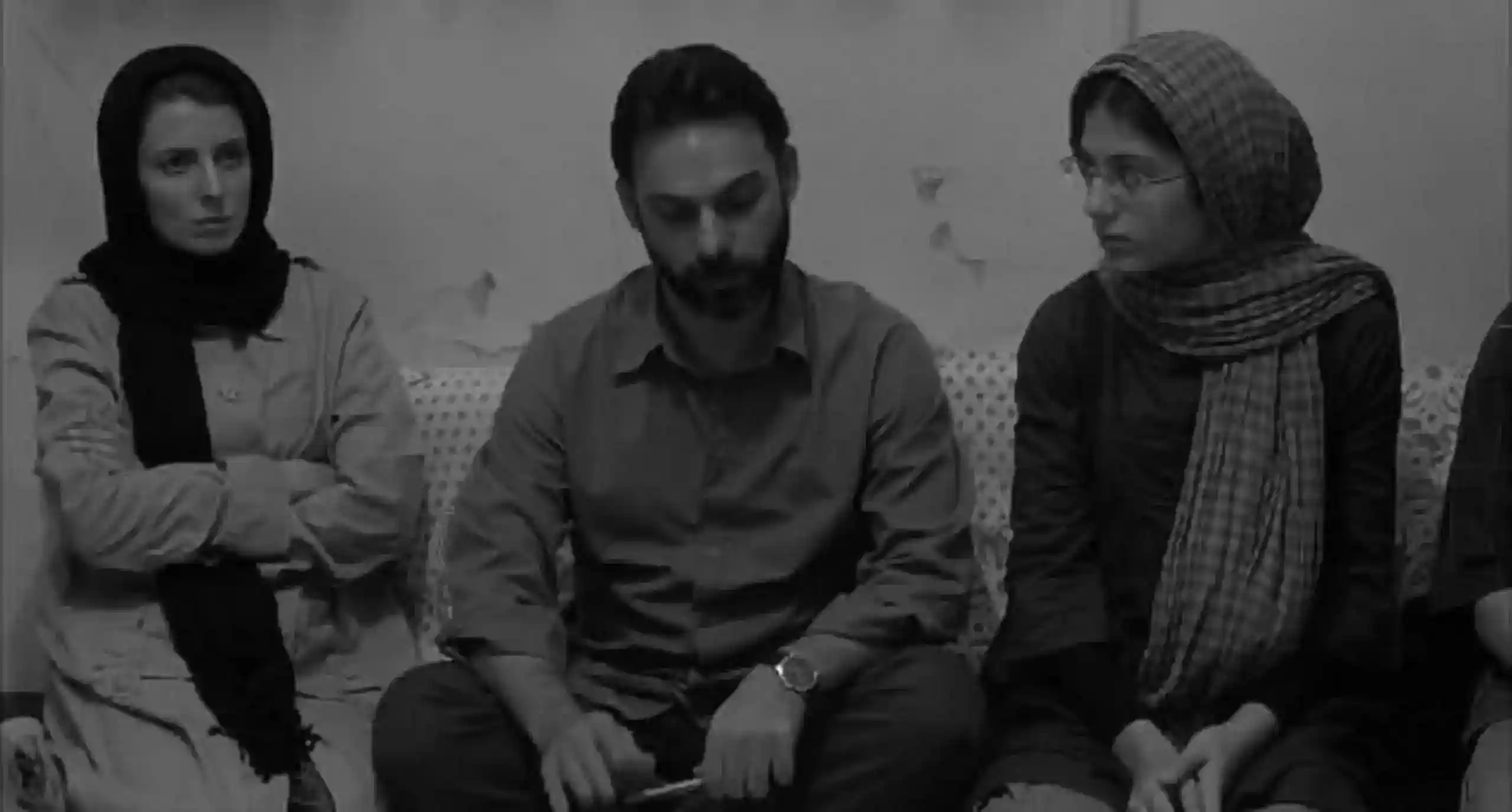
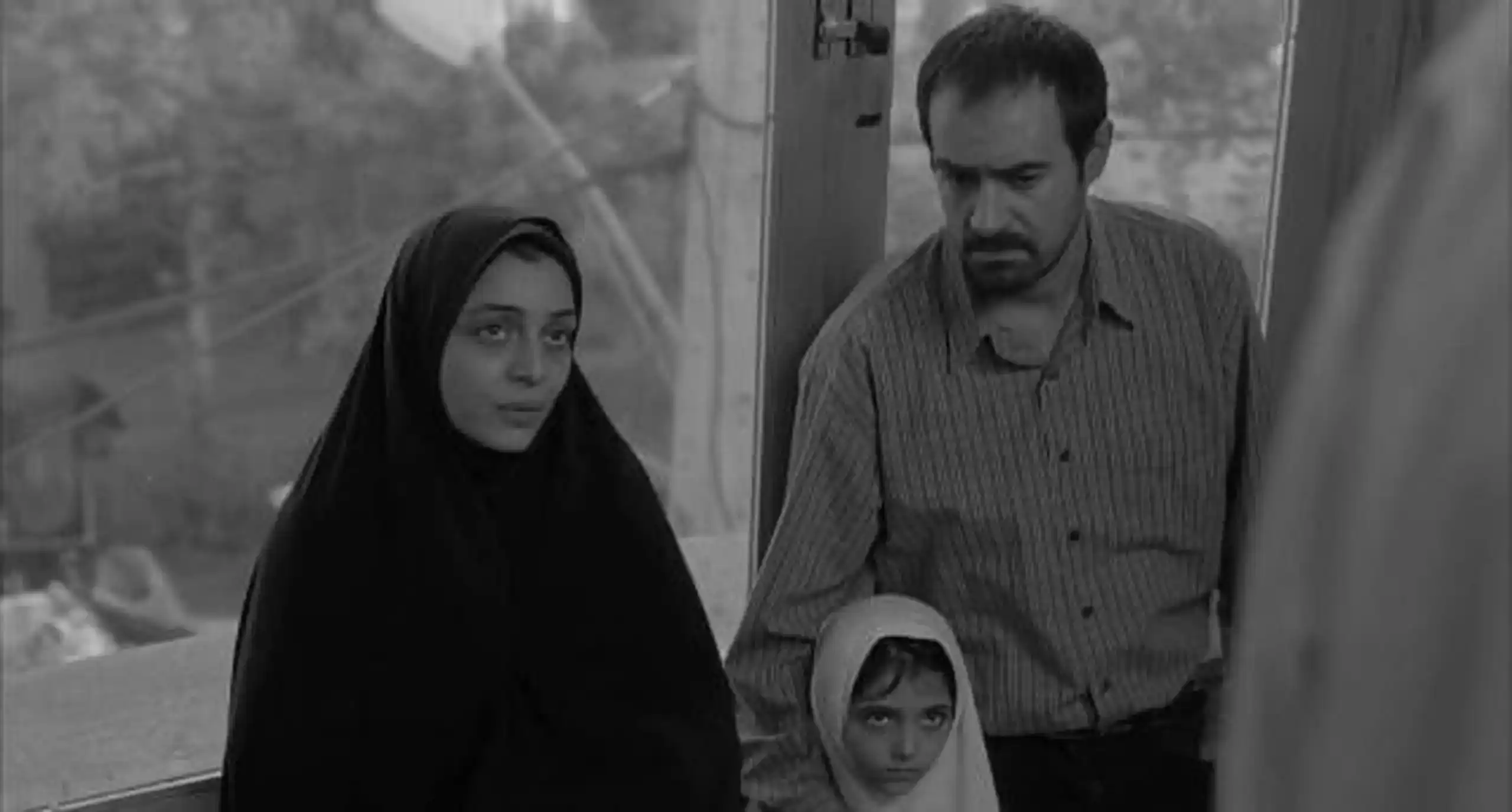
Nader (Peyman Moadi): A married, middle-class character devoted to his family. He is willing to risk everything for his daughter and father. He has a rigid structure and is resistant to change. He avoids showing his emotions and is stubborn.
Simin (Leila Hatami): A middle-class, married, and secular woman who is dissatisfied with her social conditions. She is willing to risk divorce for the good of her daughter. Like Nader, she has a stubborn personality. Compared to Nader, her conscientious side is stronger.
Razieh (Sareh Bayat): A lower-class, married, poor, and pregnant woman. Due to her husband Hodjat, she carries the burden of supporting the family and is a hardworking woman. She adheres to religious rules.
Hodjat (Shahab Hosseini): A lower-class, unemployed character who cannot control his anger. He has a distinct anger towards upper-class people. He has a repressive attitude towards his wife. He is crushed under the weight of not being able to provide for his family. For this reason, he is desperate enough to risk sinning.
Termeh (Sarina Farhadi): An emotional middle-school character. She does not want her parents to divorce. She is devoted to her family. Although she questions the actions of her family members, she stands by them.
Somayeh (Kimia Hosseini): A 6-7 year old girl. Despite her young age, she is a character who can comprehend what is happening in her family and conceals her mother’s lies. She has been forced to mature at an early age. Like her father Hodjat, she harbors anger towards Nader and his family. However, this anger is not a class-based anger, but rather an anger stemming from the fact that her own family is falling apart because of Nader’s family.
Conflict
The main conflict of the film, as the title suggests, is about separation. This separation has two different meanings on the societal and character levels.
| To Go (For a better future) | To Stay (To fight) |
|---|---|
| Simin | Nader |
Termeh is at the center of this conflict between Simin and Nader. Another point of conflict for the divorcing couple is who Termeh will live with. This is also the conflict of the character Termeh.
| Termeh |
|---|
| Simin (Mother) Nader (Father) |
One of the main conflicts of the film is the class conflict. We can express this conflict as follows:
| Middle Class | Lower Class |
|---|---|
| Simin, Nader, Termeh | Razieh, Hodjat, Somayeh |
We also see that these people from different classes clash in terms of their outlook on life.
| Modern Lifestyle | Traditional Lifestyle |
|---|---|
| Simin, Nader, Termeh | Razieh, Hodjat, Somayeh |
One of the concrete conflicts in the film is whether Nader caused the death of Razieh’s unborn child.
| Guilty (!) | Victim |
|---|---|
| Nader | Razieh, Hodjat, Somayeh |
The equivalent of the guilty and victim conflict from Nader’s perspective can be expressed through the tying up of his father.
| Guilty (!) | Victim |
|---|---|
| Razieh | Nader, Nader’s Father, Termeh |
Style Features
Cinematography
Cinematography and mise-en-scène insights
The most fundamental relationship that the cinematographic approach of A Separation establishes with the dramatic structure is seen in the opening court scene. In this scene, the camera looks at the divorcing couple from the subjective perspective of the judge. With this choice, the director wants to position the audience as a judge who looks at the events impartially (without identifying).
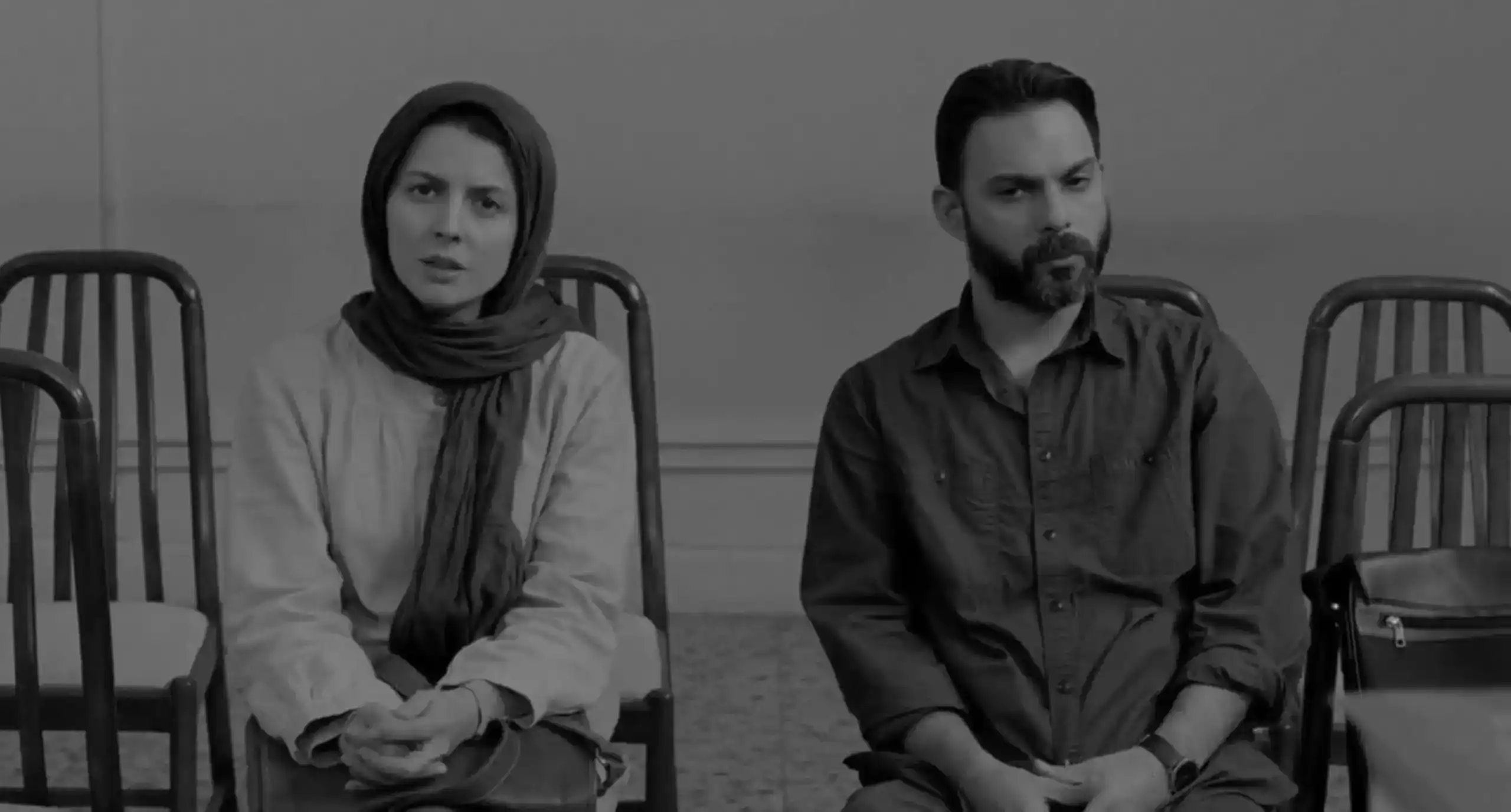
For the rest of the film, we see that the camera is used with an objective perspective towards the characters and events.
“According to Godfrey Cheshire, the glass partitions inside the house not only allow cinematographer Mahmoud Kalari’s fluid handheld camera following the characters to constantly reframe them but also to put a distance between the character and the audience. This technique, which allows our perspective to constantly shift from one character to another as we try to grasp their thoughts and justifications and resolve our feelings about them, creates a visual dynamic that matches the emotional and moral dynamics of the drama.”[^2]
Although high-angle shots are used from time to time in the film, the shots are predominantly at eye level. Medium shots and medium-long shots are used throughout the film. The camera moves—almost like an observer—among the characters. Therefore, a documentary feel prevails in the film.
The fight scene where Hodjat headbutts Nader—just like the fight scene in About Elly—is shot in a long shot. This choice supports the realistic atmosphere of the film.
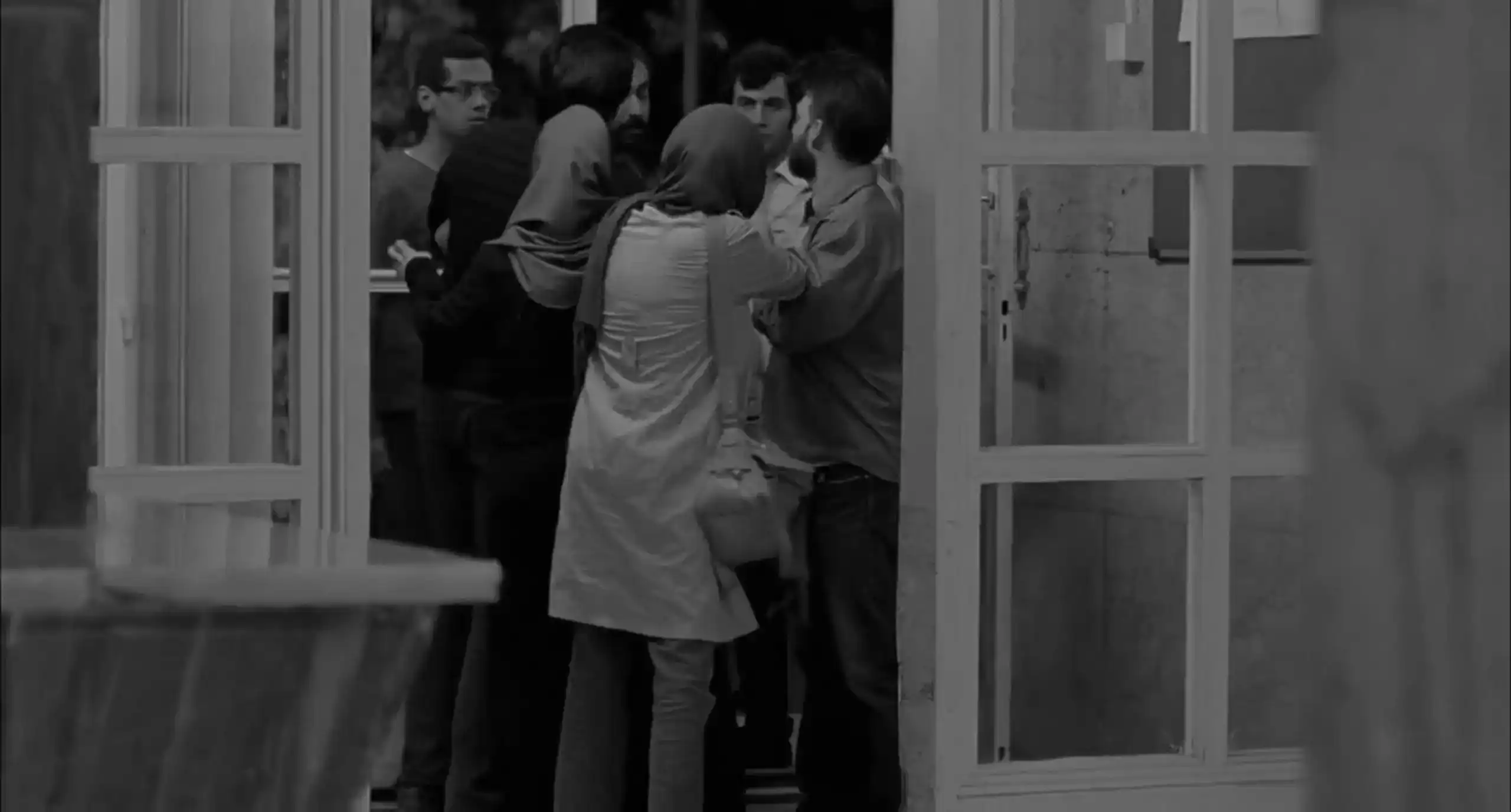
Natural locations are used in the film, and we see that a natural lighting choice has been made. Sunlight is used in daytime scenes, and streetlights and other environmental lights are used at night. The film is predominantly in brown and green colors. No effects are used, and a realistic atmosphere is created.
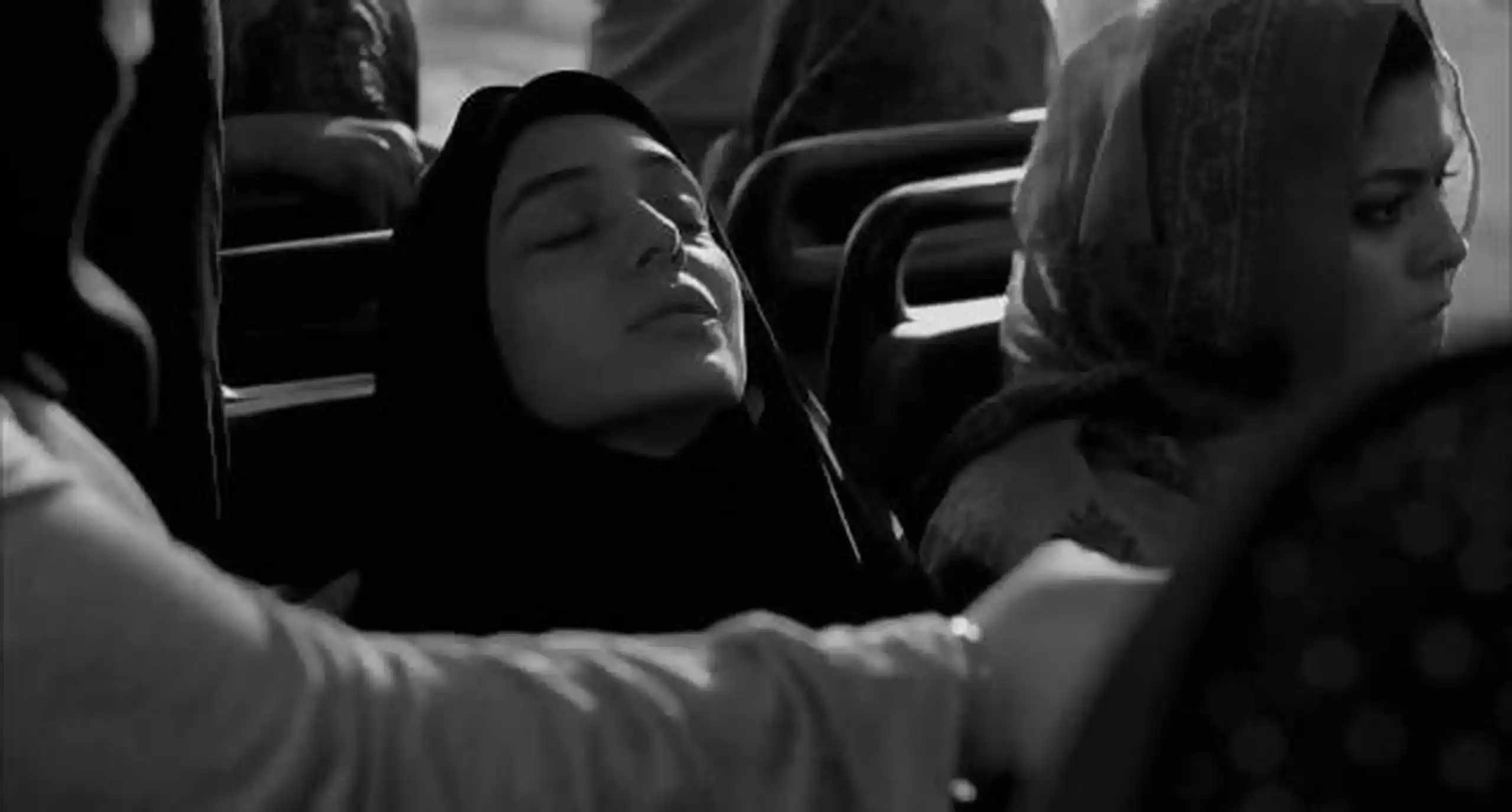
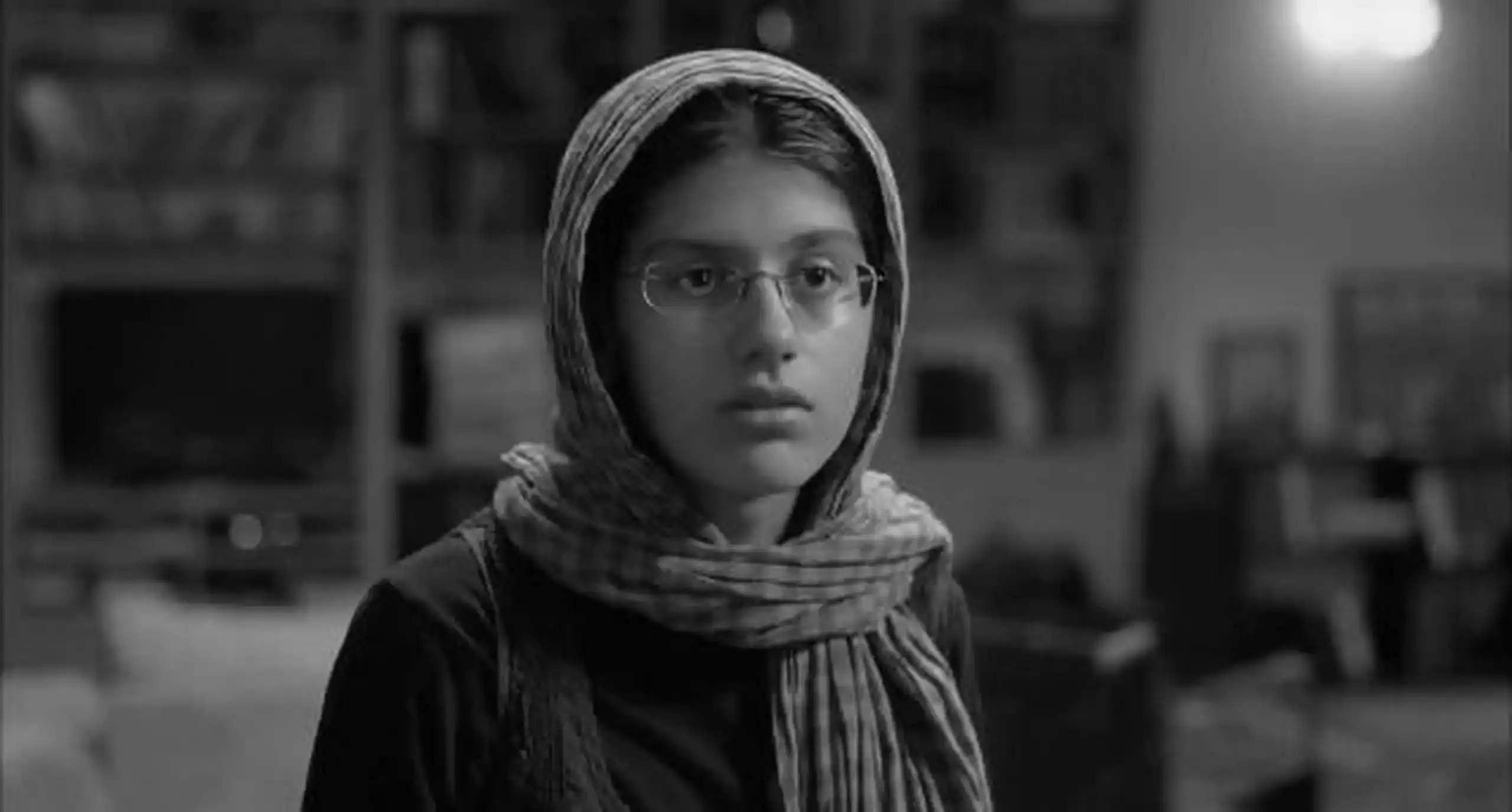
Mise-en-scène
In the first scene of A Separation, Asghar Farhadi, just as in About Elly, has chosen a claustrophobic space. This scene is inside a photocopier. Legal documents such as IDs and passports are being scanned. These documents belong to different people. The owners of the documents that Farhadi will put under the lens are the documents of the main characters of the film, Nader and Simin.
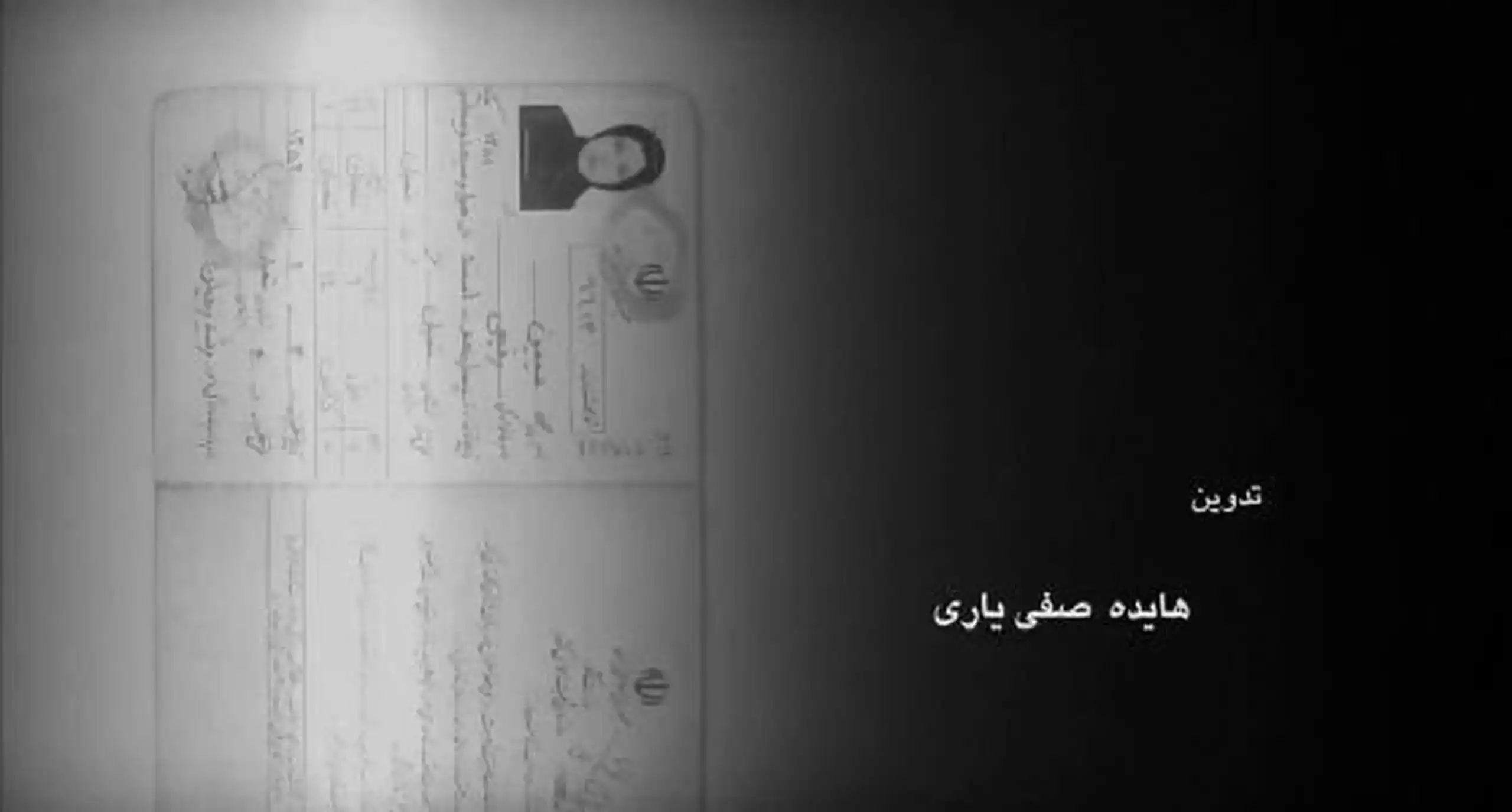
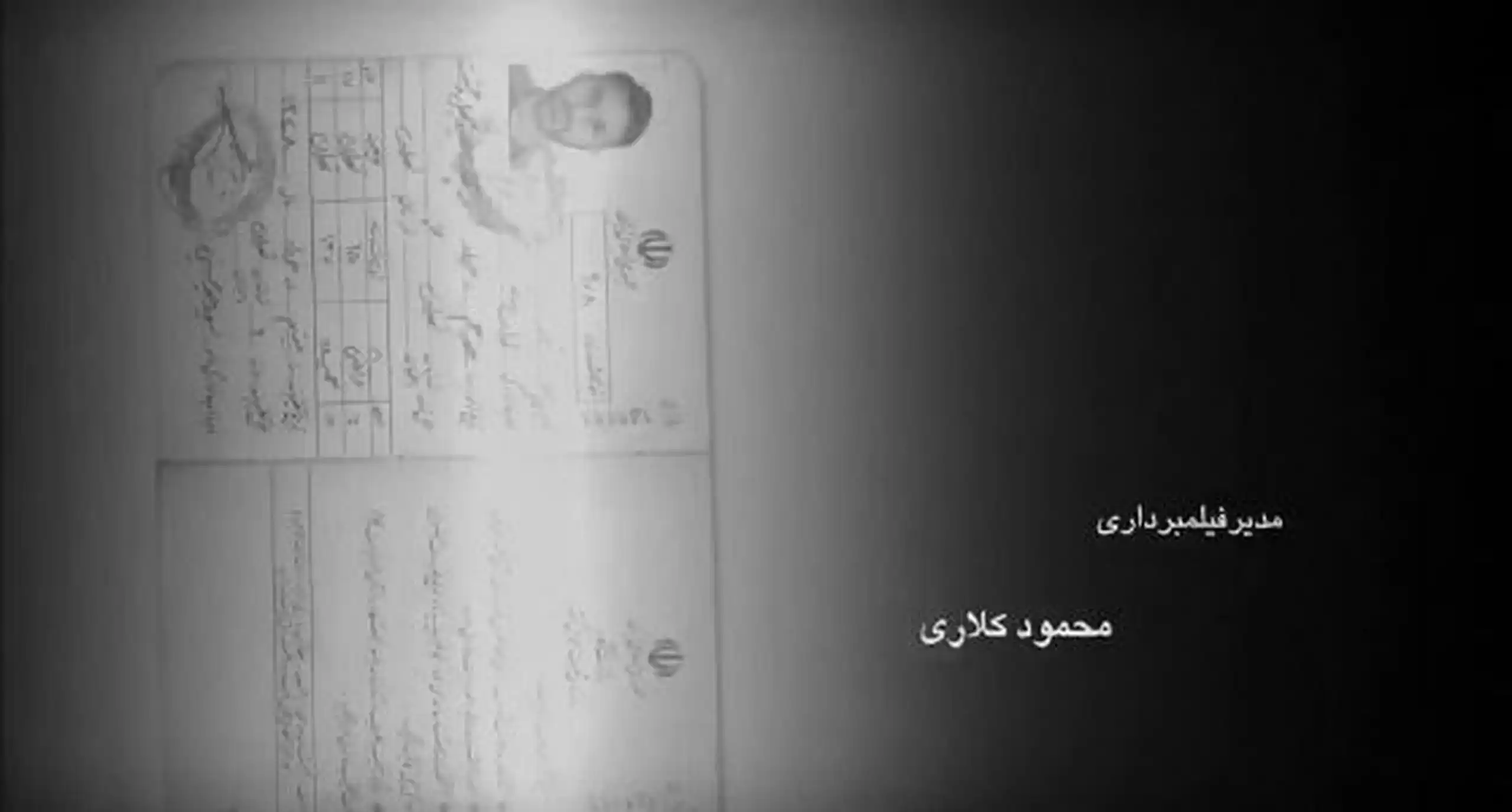
Looking at the film as a whole, we see that the locations are indoor spaces. No studio shots were made. Nader and Simin’s house, Razieh and Hodjat’s house, the courtroom, the hospital, the school, and the workplaces are all real environments. Nader and Simin’s house has a Western-style decoration typical of the middle class. It is a well-kept, tidy house. There are many windows and doors in the house. This structure makes the house convoluted. The characters are distant and trapped from each other within this convoluted structure. Hodjat and Razieh’s house is typical of the lower class and is decorated in a traditional style. There are cushions on the floor, and everyone can see each other. It is a poorly maintained house with cracks on its walls. This house is much more simply arranged compared to Nader and Simin’s house.
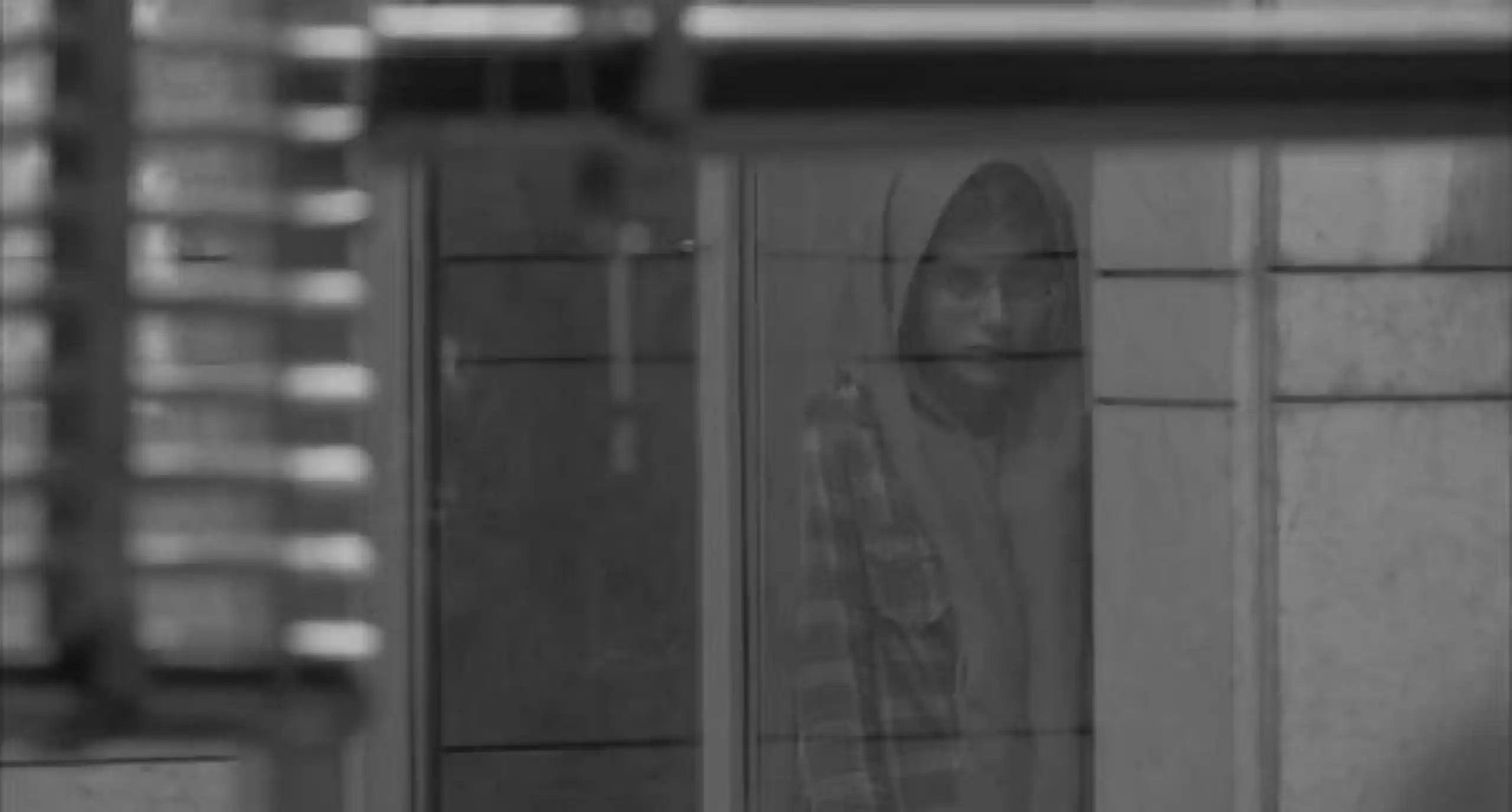
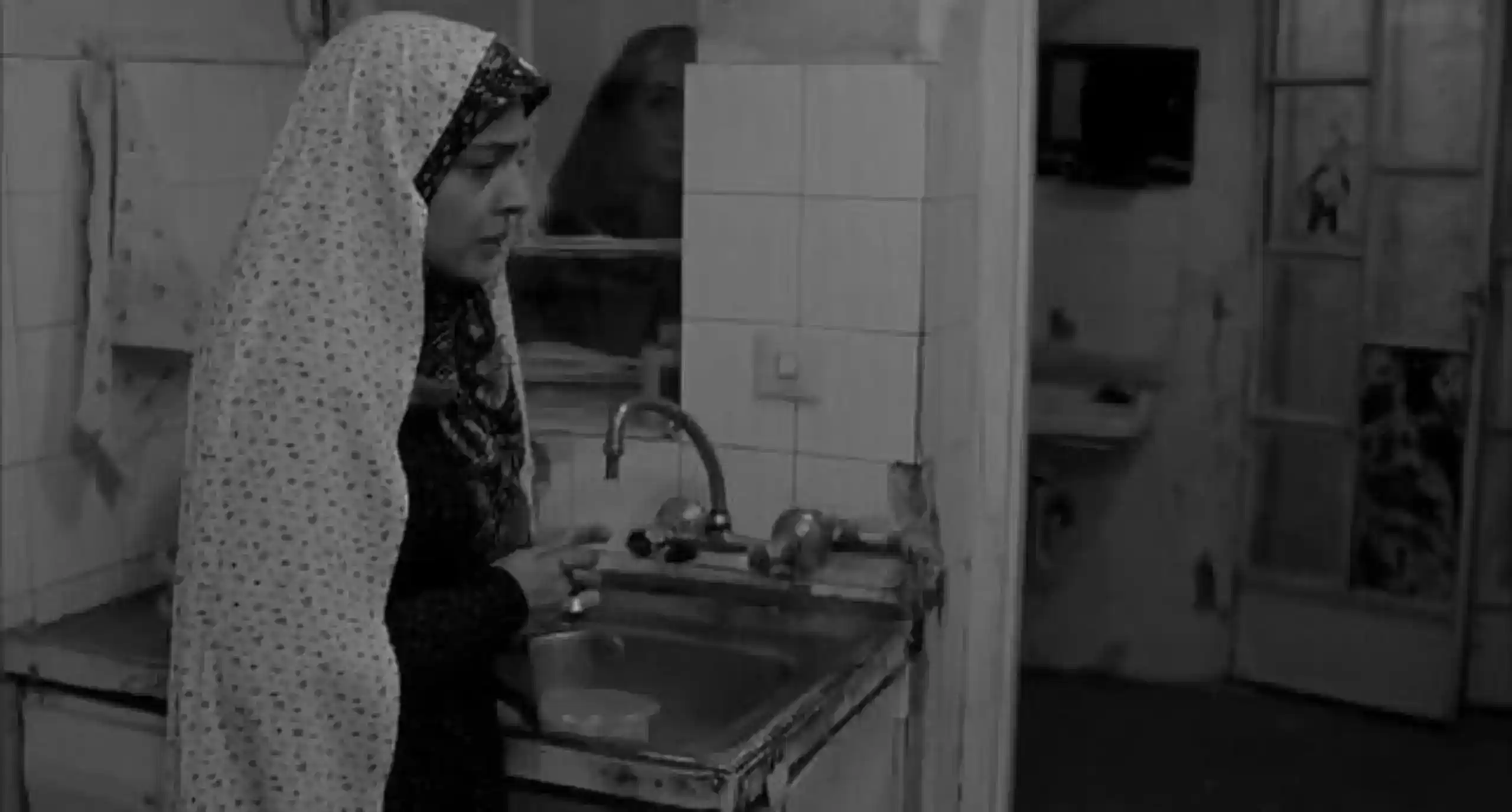
Based on the idea that the windows in Nader and Simin’s house build a wall between the characters, we can also evaluate the scene where Hodjat comes to the bank where Nader works and talks to him through the window in this context. The window between the two shows their class differences. We can also evaluate Hodjat’s breaking of Nader’s car window in this context.
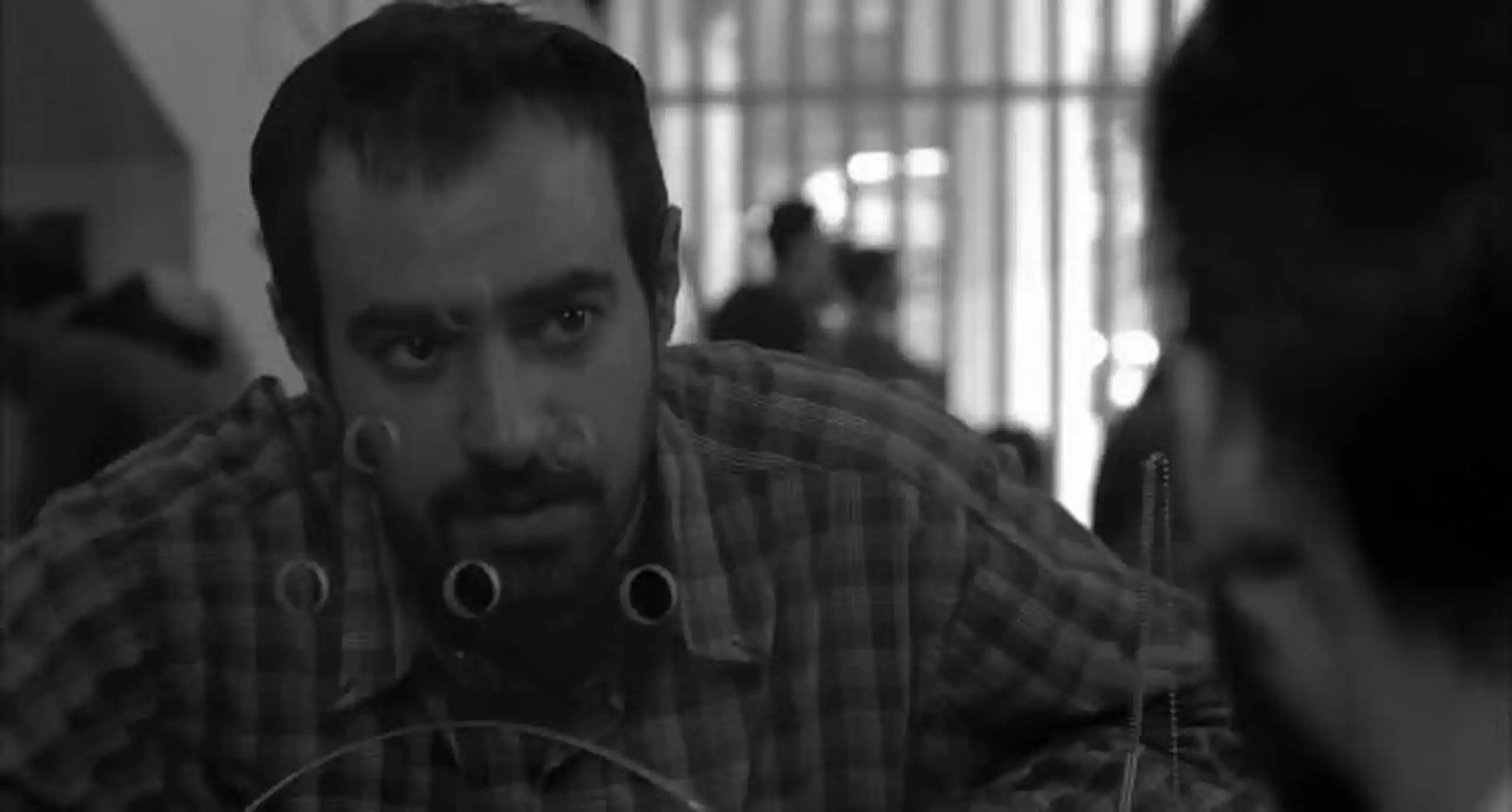
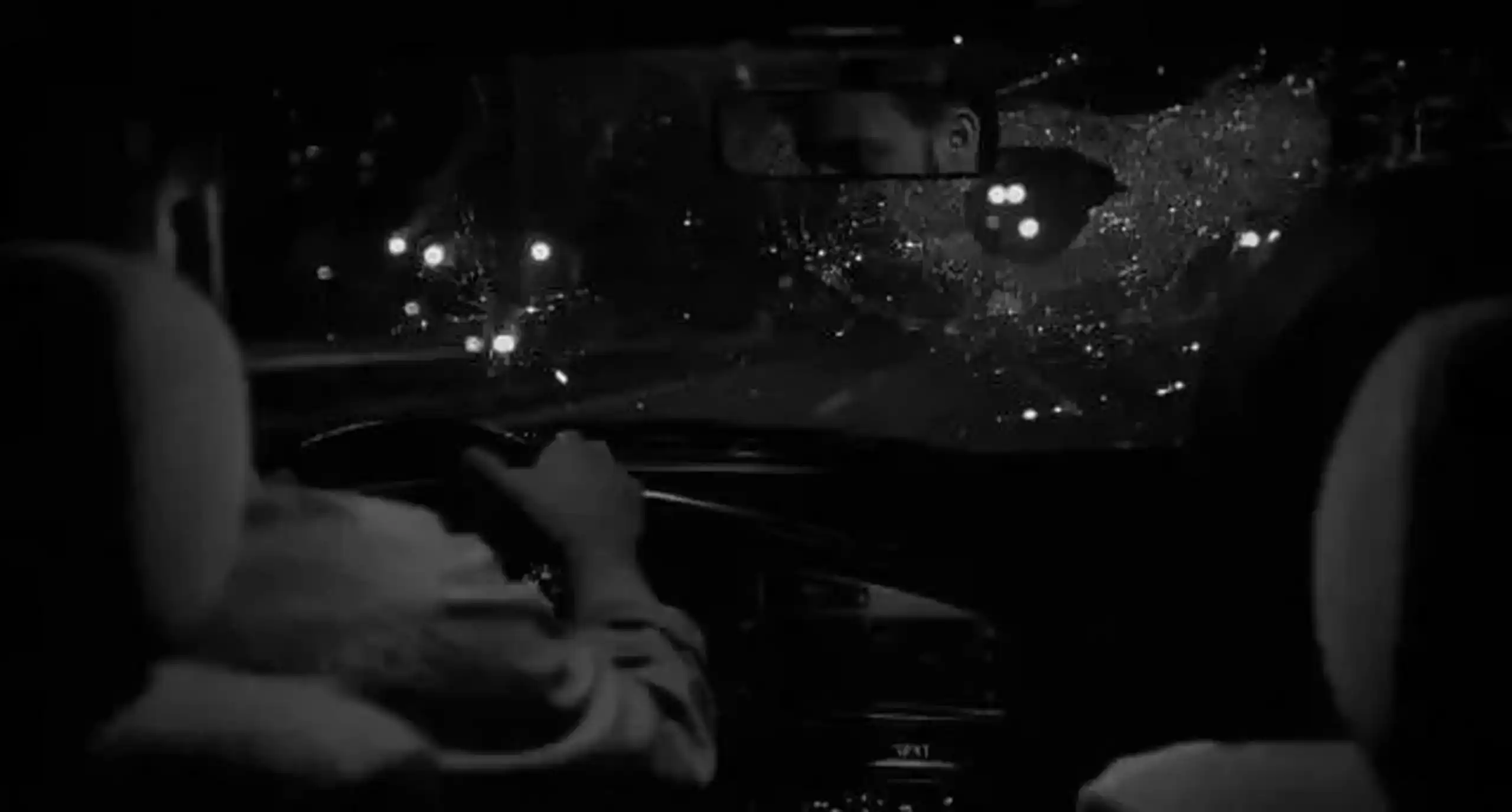
We see that a realistic approach is also preferred in the costume design of the characters. Simin wears a modern tunic, while Razieh wears a black chador. These costumes reveal their social positions.
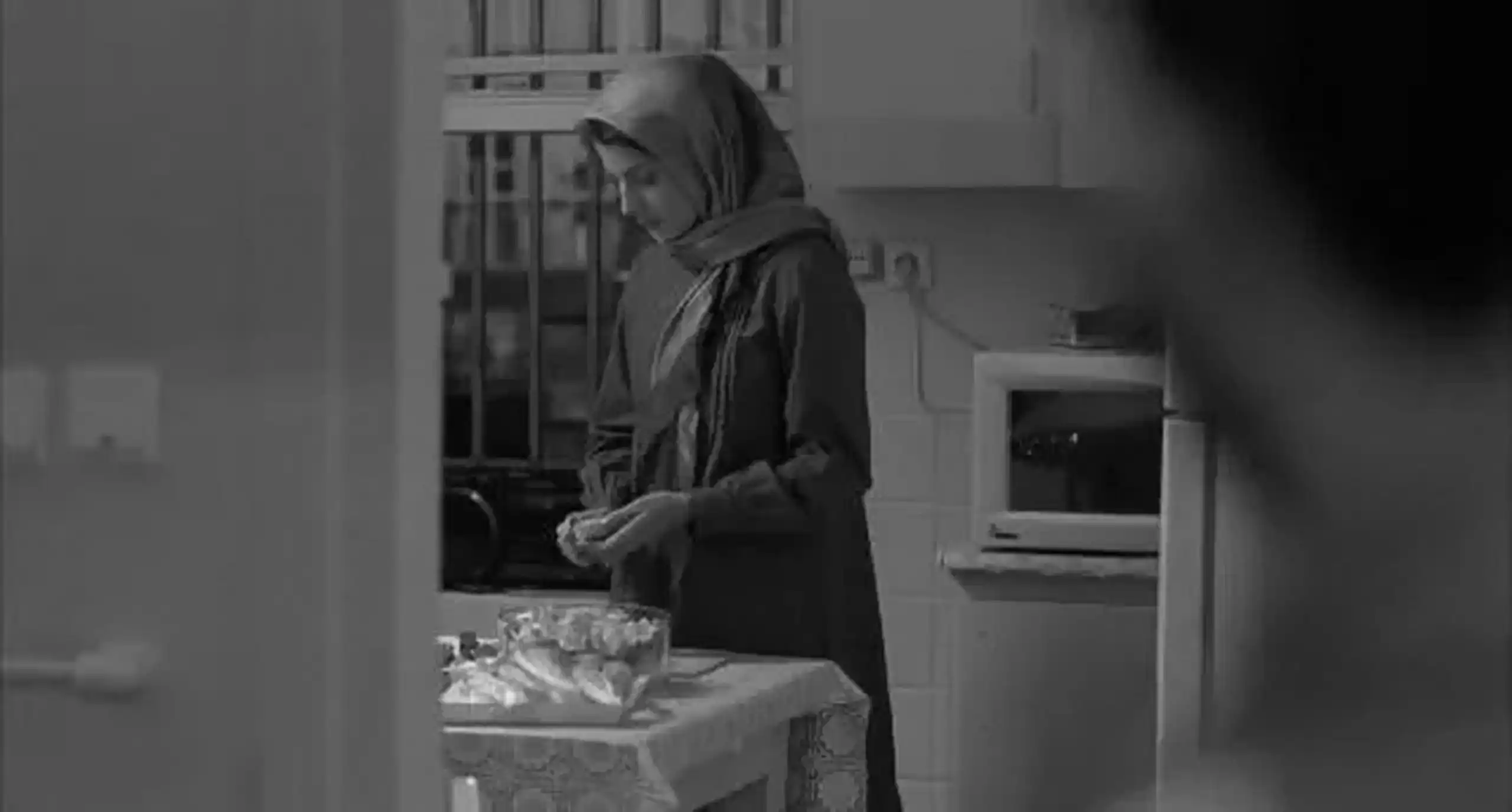
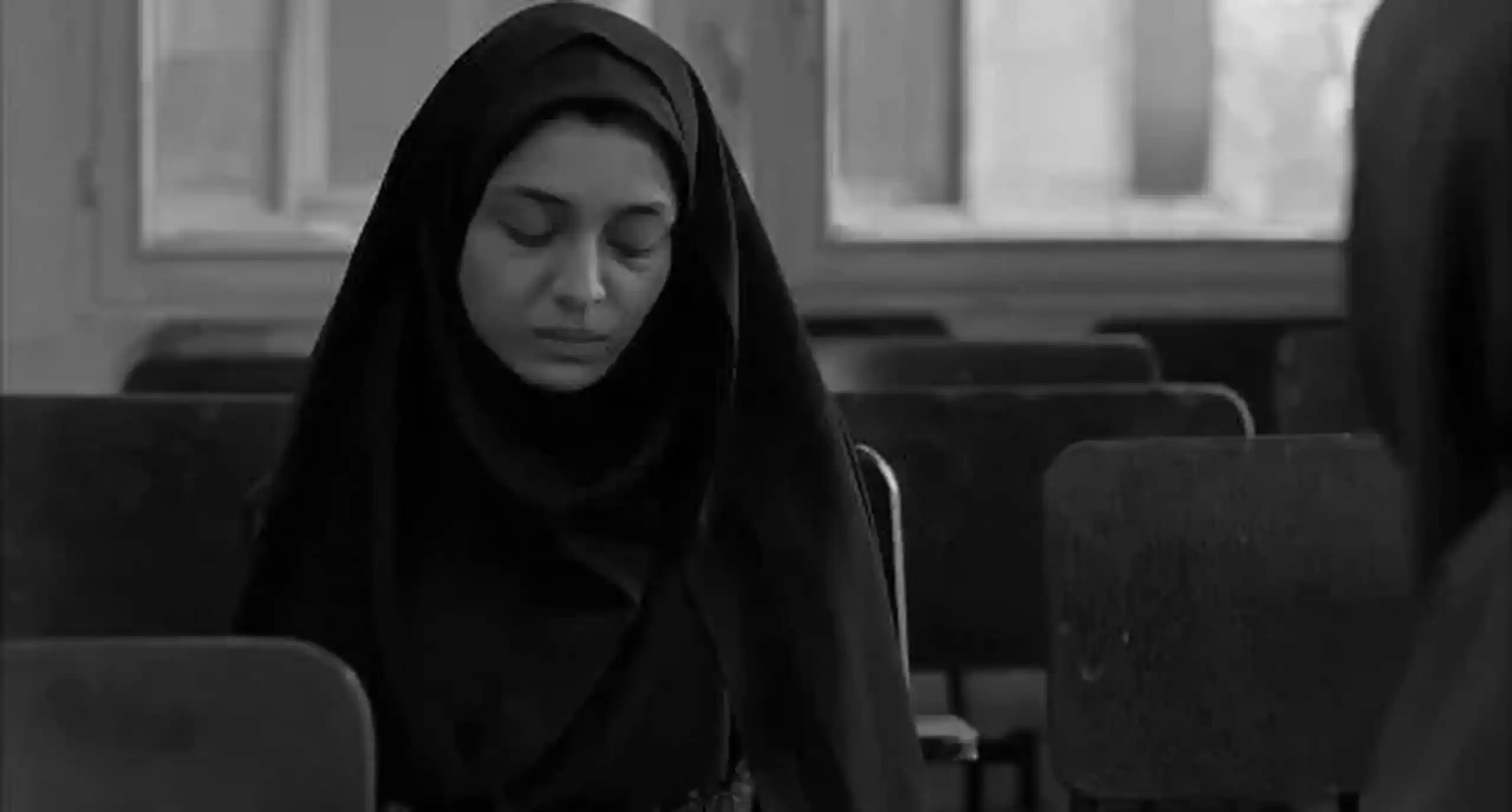
The use of non-diegetic music is only used in the final scene with the credits. This choice supports the dramatic structure of the film.
Professional and amateur actors are used in the film. The acting is natural throughout. Even the child actors deliver realistic performances that support the dramatic structure and atmosphere.
Editing
The fictional time of A Separation progresses in a way that is consistent with the natural flow of life, in the present tense. Hayedeh Safiyari predominantly uses cuts in the film’s editing. This way, the editing does not make itself felt, and the action is not interrupted.
There are two critical cuts used in the film. The first of these is the cut from the scene where Razieh’s accident is not shown to the scene where they play foosball. The positive atmosphere in the foosball scene creates the impression that the accident did not happen. This way, the mystery is preserved until the finale.
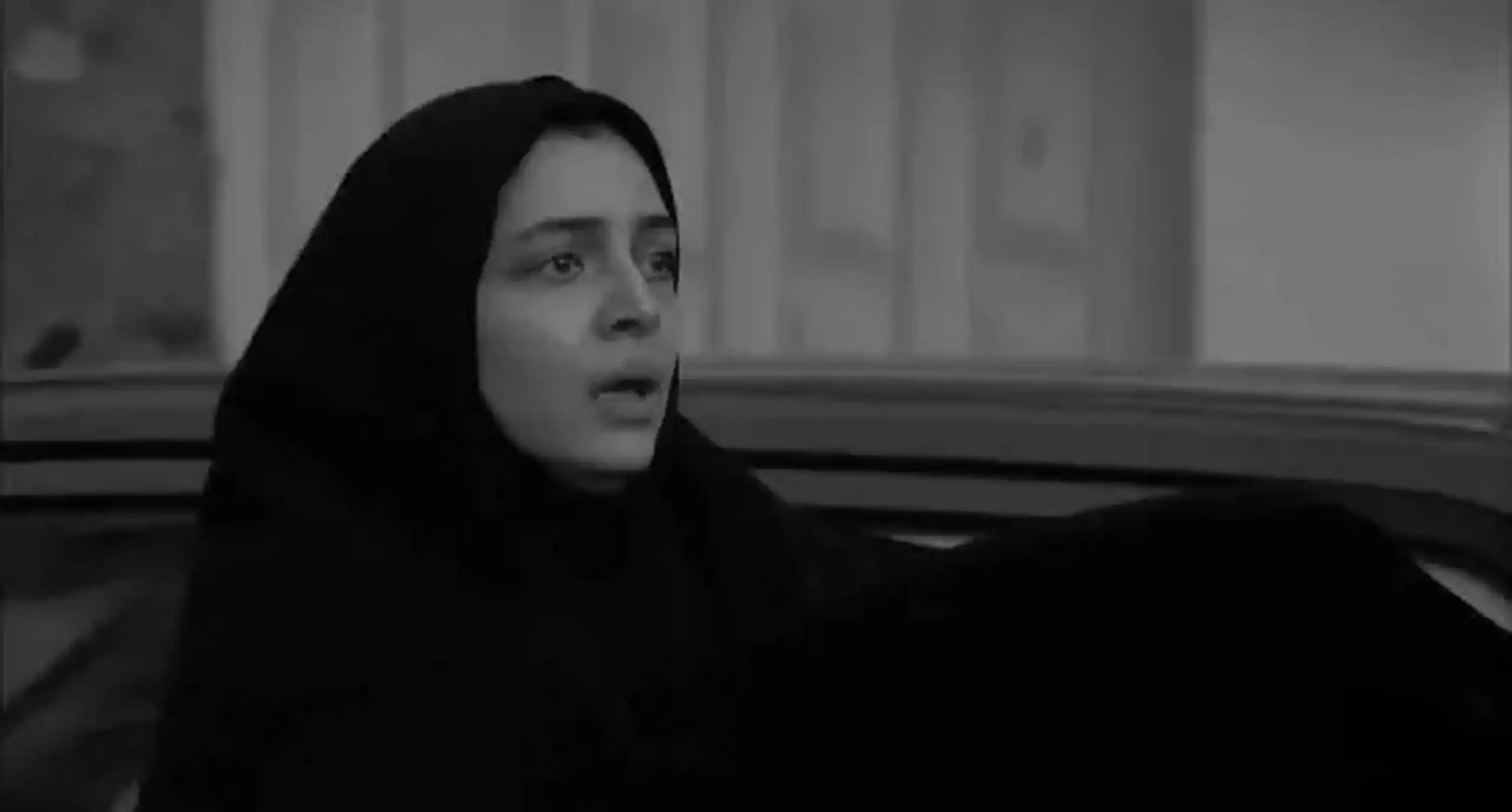
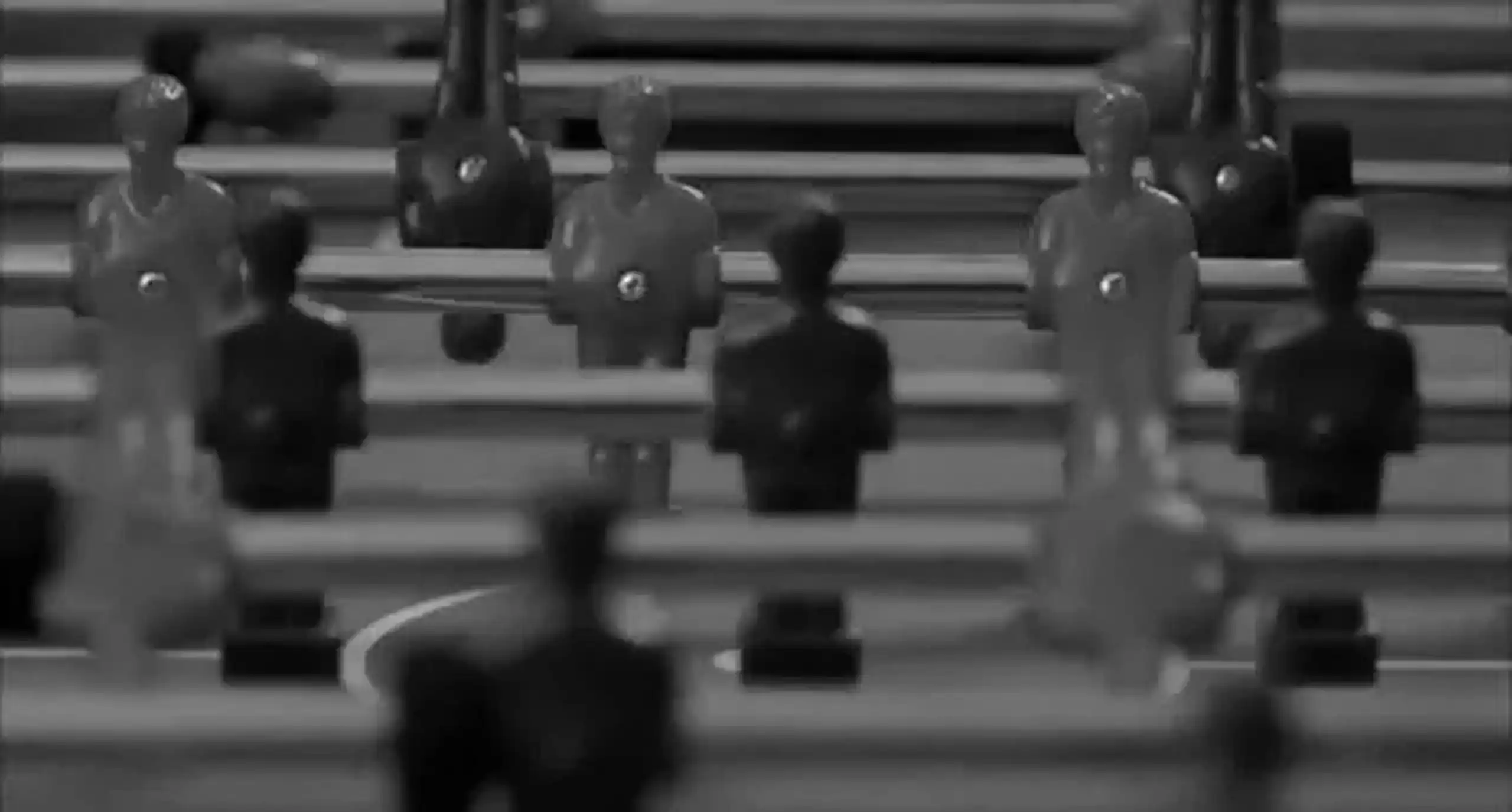
Another cut is used in the scene where Nader is examining the scene of the incident with Termeh on the stairs and goes behind the door to rehearse the event. A time jump is made with this cut.
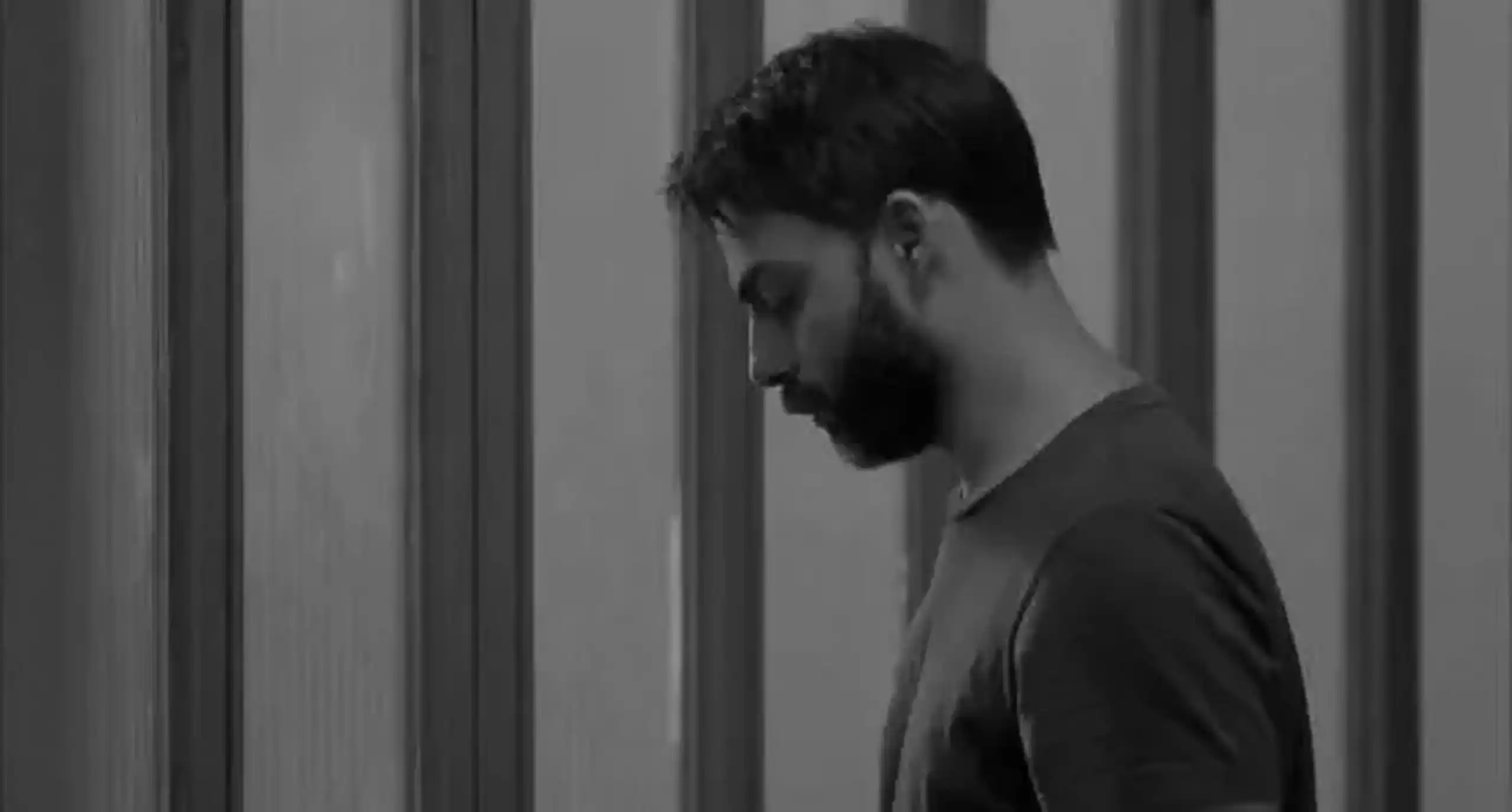
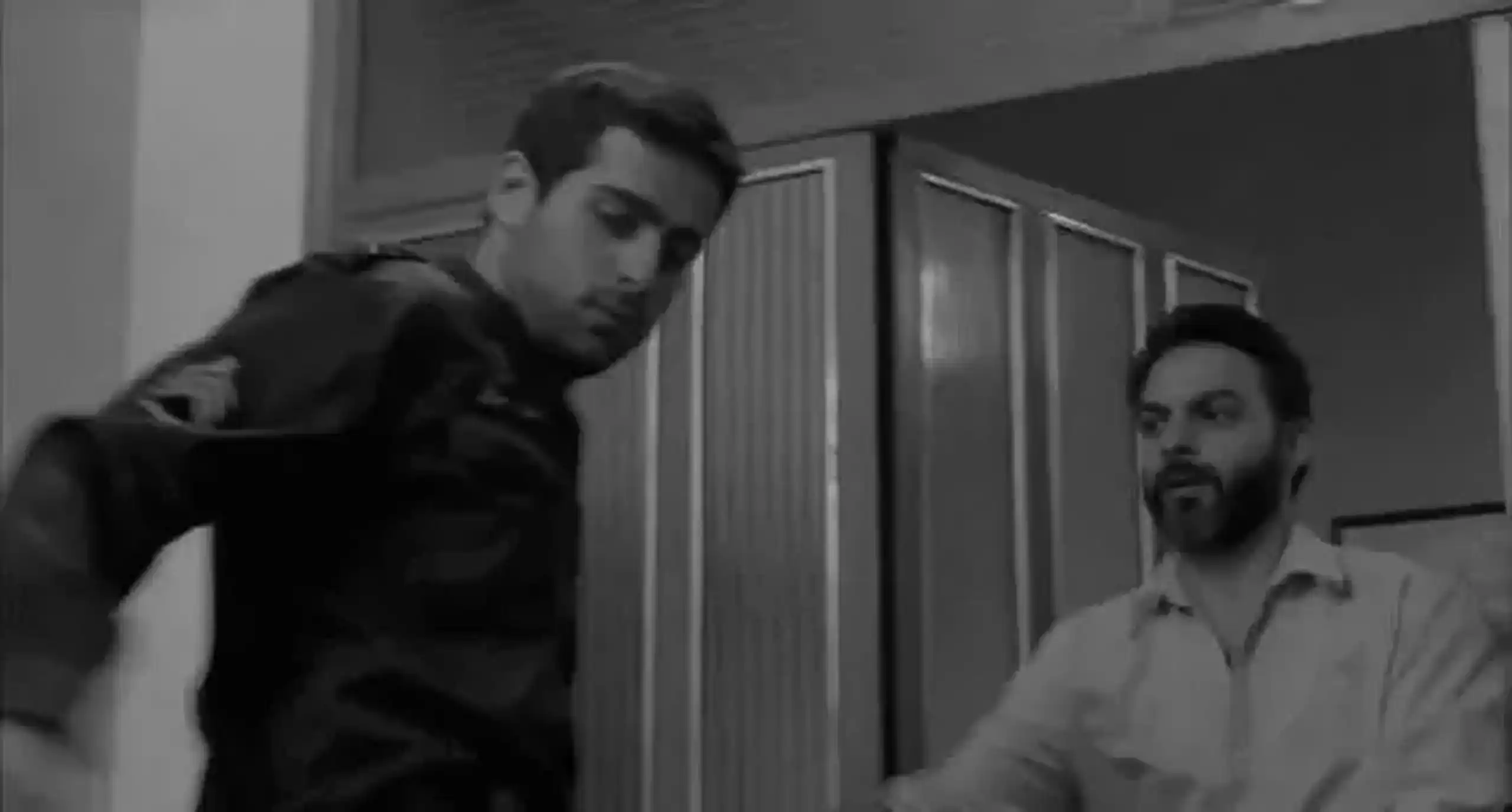
There are two long scenes in the film where there are no cuts, and thus the dramatic effect is increased. The first of these is the scene where Nader washes his father, and the second is the scene where Nader and Simin wait for Termeh’s decision in the courthouse corridors.
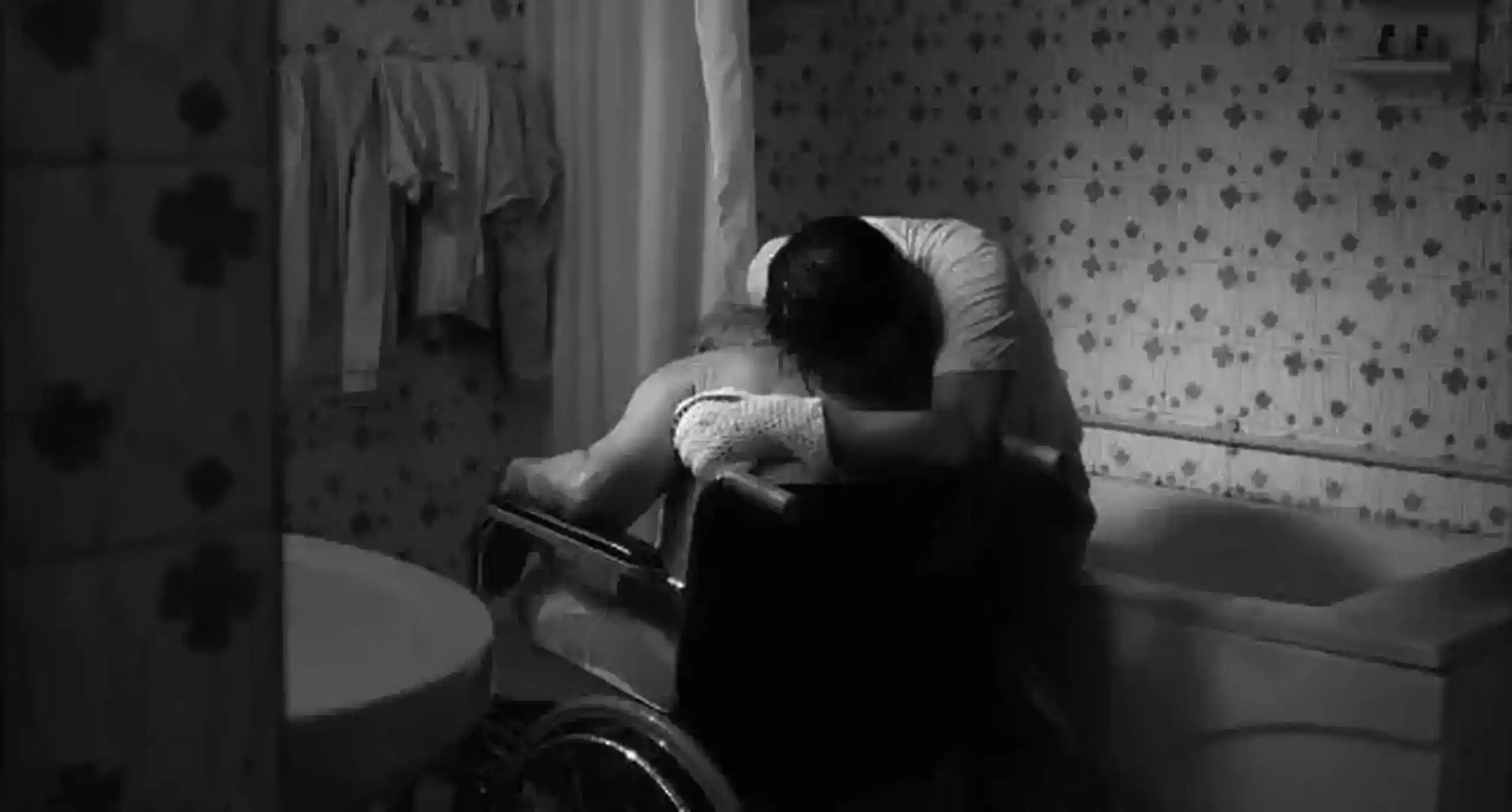
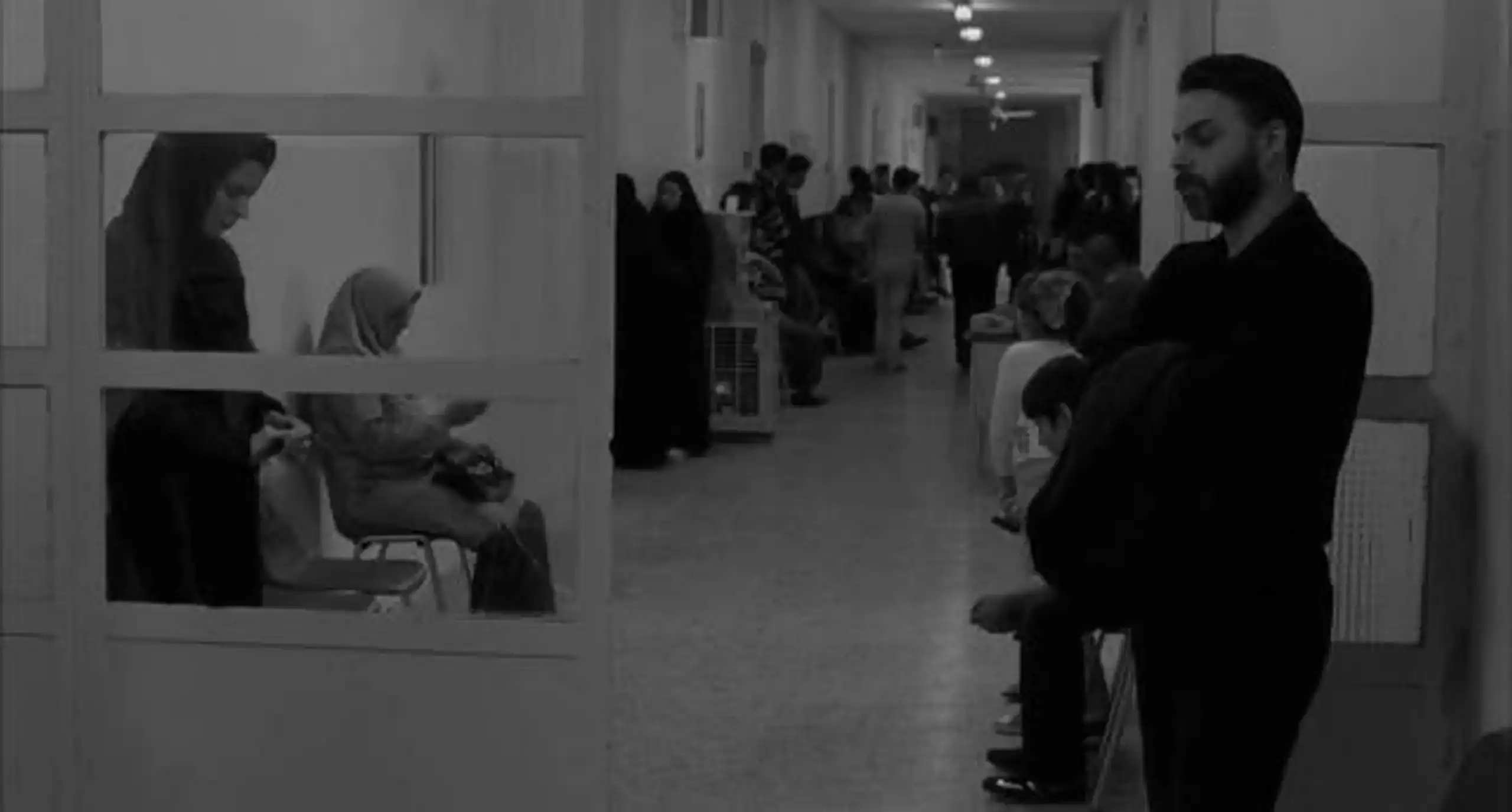
There is only one transition effect used in the film besides cuts. This is the fade-to-black transition from the close-up of Termeh’s face to the courtroom in the scene where Nader, Simin, and Termeh are returning from Razieh’s house. A time jump is made through the fade-to-black.
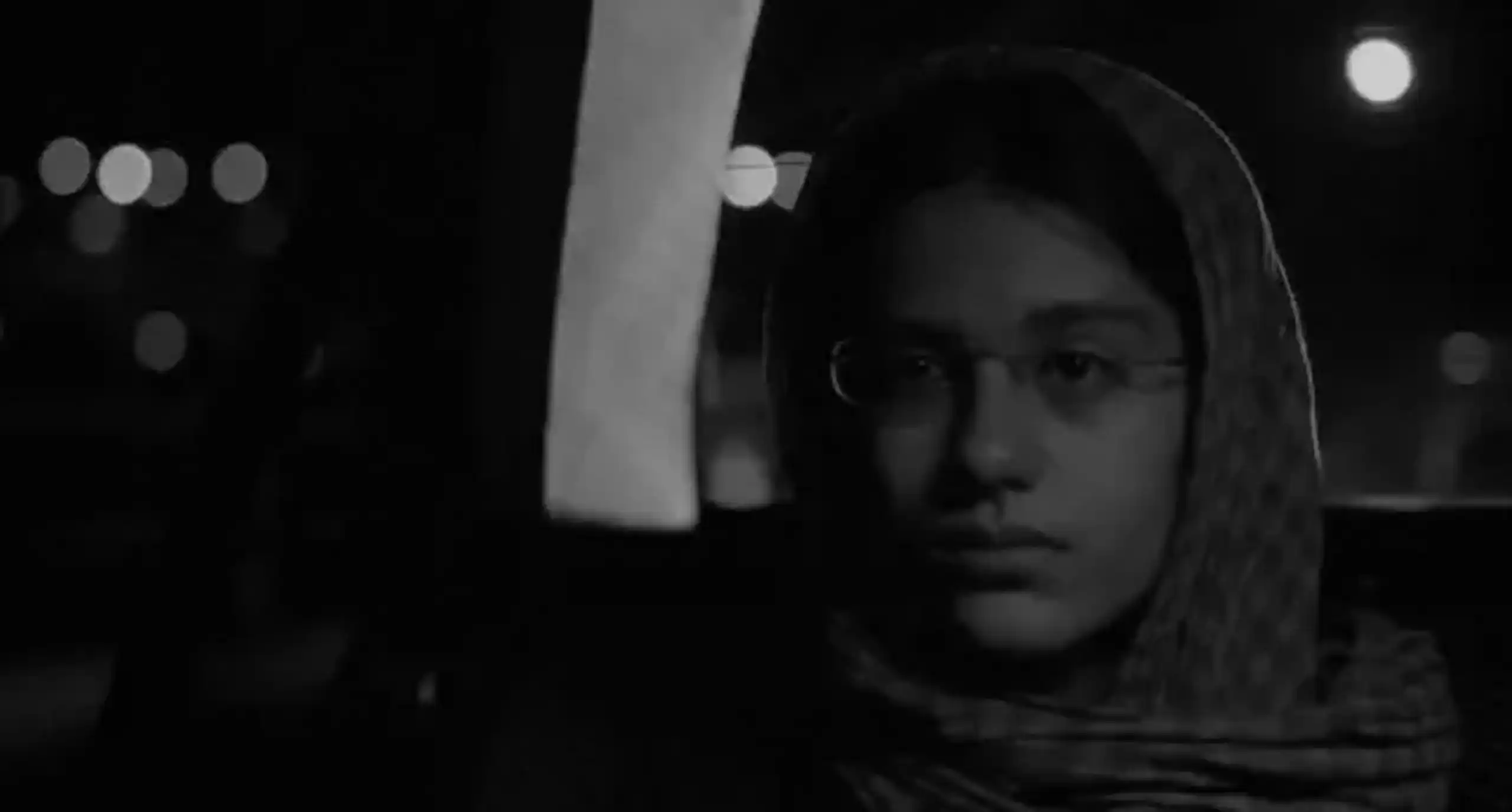
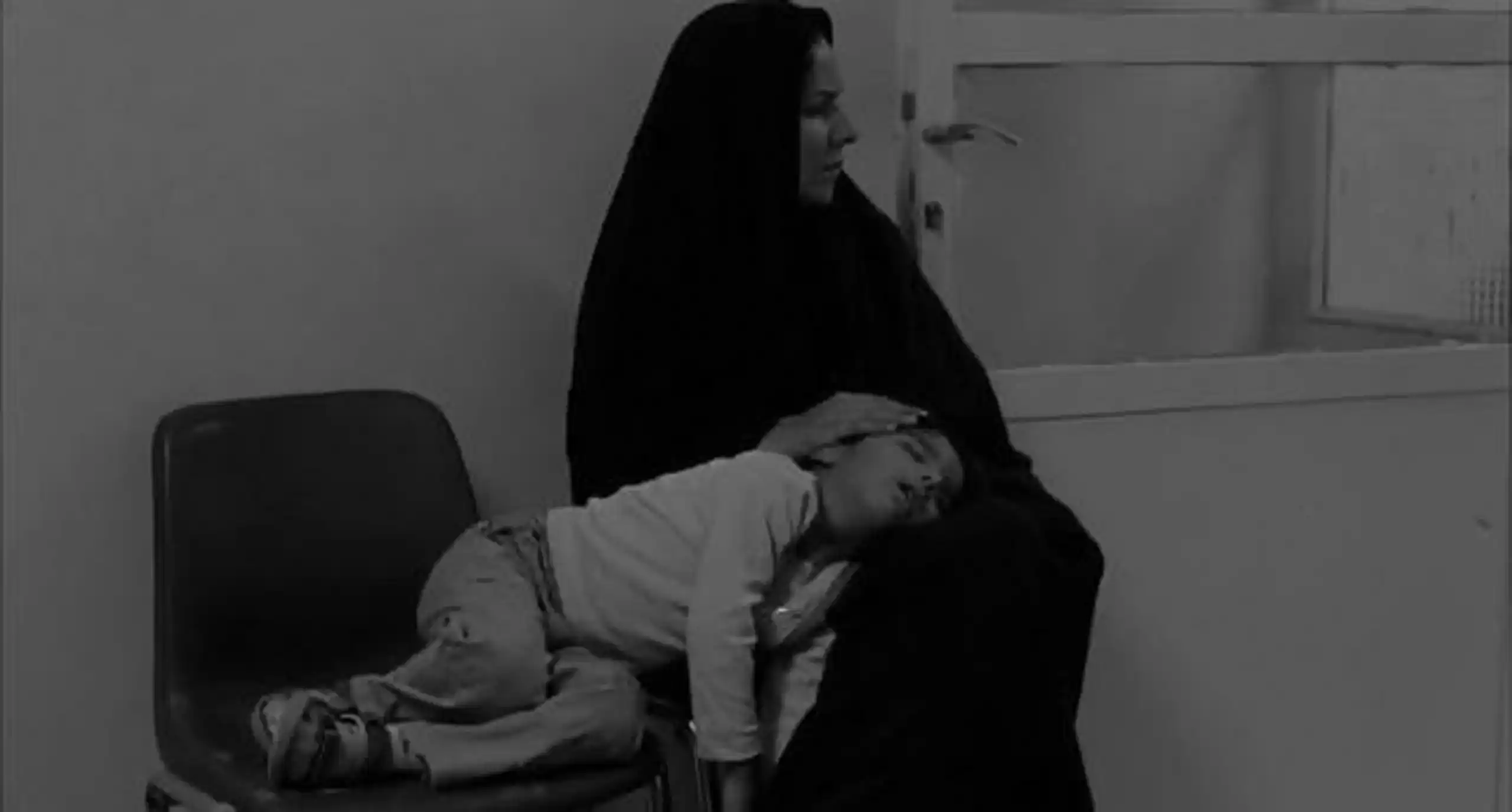
Narrative Structure
The prologue of the film shows the photocopying of official documents belonging to different people inside a photocopier. The last of these documents are those belonging to Nader and Simin. This scene creates the same claustrophobic effect as the alms box scene in the opening of About Elly. The reason for Asghar Farhadi’s choice in the opening of the narrative is his desire to reflect that he will focus on the story of an ordinary person in daily life and that there are many similar stories.
After the photocopy scene comes the courtroom scene. In this scene, the characters and their situation are generally outlined, and the main conflicts are made clear. Nader and Simin have come to court to divorce. The reason for their divorce is immediately understood through the dialogues. Simin wants to go abroad for her daughter’s future, while Nader does not want to leave his father behind. The point on which the two cannot agree is who their daughter Termeh will stay with. The judge does not make a final decision at this point and says that they should resolve the child’s situation themselves, postponing the case to a later date. With this scene, the audience has taken the position of a judge. Just like a photocopier, they will photocopy the life of Nader and Simin and make an objective decision. Therefore, it can be said that the court scene is a scene where Farhadi breaks the identification in the narrative. The audience will begin to watch the entire process impartially.
The next scene is at Nader and Simin’s house. There is a small detail about the class conflict in the scene where Simin enters the house. Just as Simin is about to go up to the house, she argues with the workers carrying furniture on the stairs about the fee. This situation is a foreshadowing of the later scenes where the class conflict is dominant.
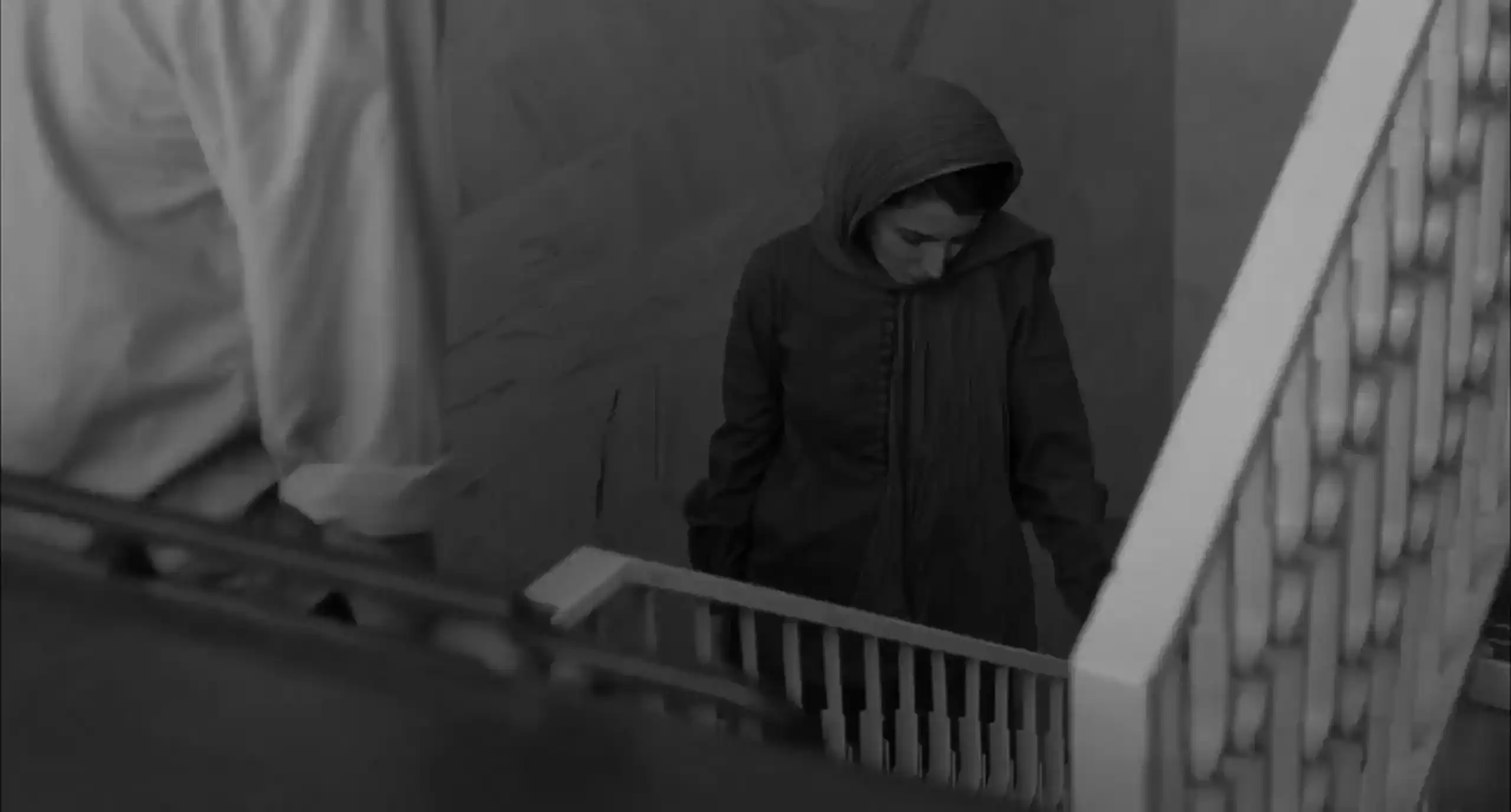
In this scene at Nader and Simin’s house, the other characters of the film are introduced. It is seen that Nader’s father is a helpless person, and Termeh does not want her parents to divorce and is caught between them. At this time, we see that the protagonist of the film’s second parallel story, Razieh, is included in the narrative. Razieh is bargaining with Nader about the fee for taking care of his father. Through the dialogues and attitudes between the two, the class distinctions are seen very clearly.
Under Simin’s influence, Razieh accepts the job and comes to the house with her daughter Somayeh to take care of Nader’s father. There is an important point in this scene in terms of the story. This is related to the fact that it is not clear whether Nader knows if Razieh is pregnant or not. Razieh tells this to Termeh’s teacher, and at this time Nader is not in the living room. Nader hears these conversations while in the kitchen, but he will later claim that he did not.
After Razieh quits her job, we see that her husband Hodjat, whom she recommended for the job, comes to the bank where Nader works. There is a glass between Nader and Hodjat in this scene. This way, the class differences between the two are emphasized. This situation is also reflected in the dialogues, and they bargain about the fee for the care job.
Tragic conflict and open ending
The next day, we see that Razieh has come to work again instead of Hodjat. Hodjat could not come to work because of his creditors. Razieh starts work, and on this workday, Nader’s father leaves the house to buy a newspaper. When Razieh goes out to look for him, Nader’s father is standing in the middle of traffic. The accident that happens in this scene is removed from the plot. We immediately cut to the foosball scene, where there is a positive atmosphere. These gaps that Farhadi creates in the narrative are for the purpose of increasing the mystery and tension in the plot.
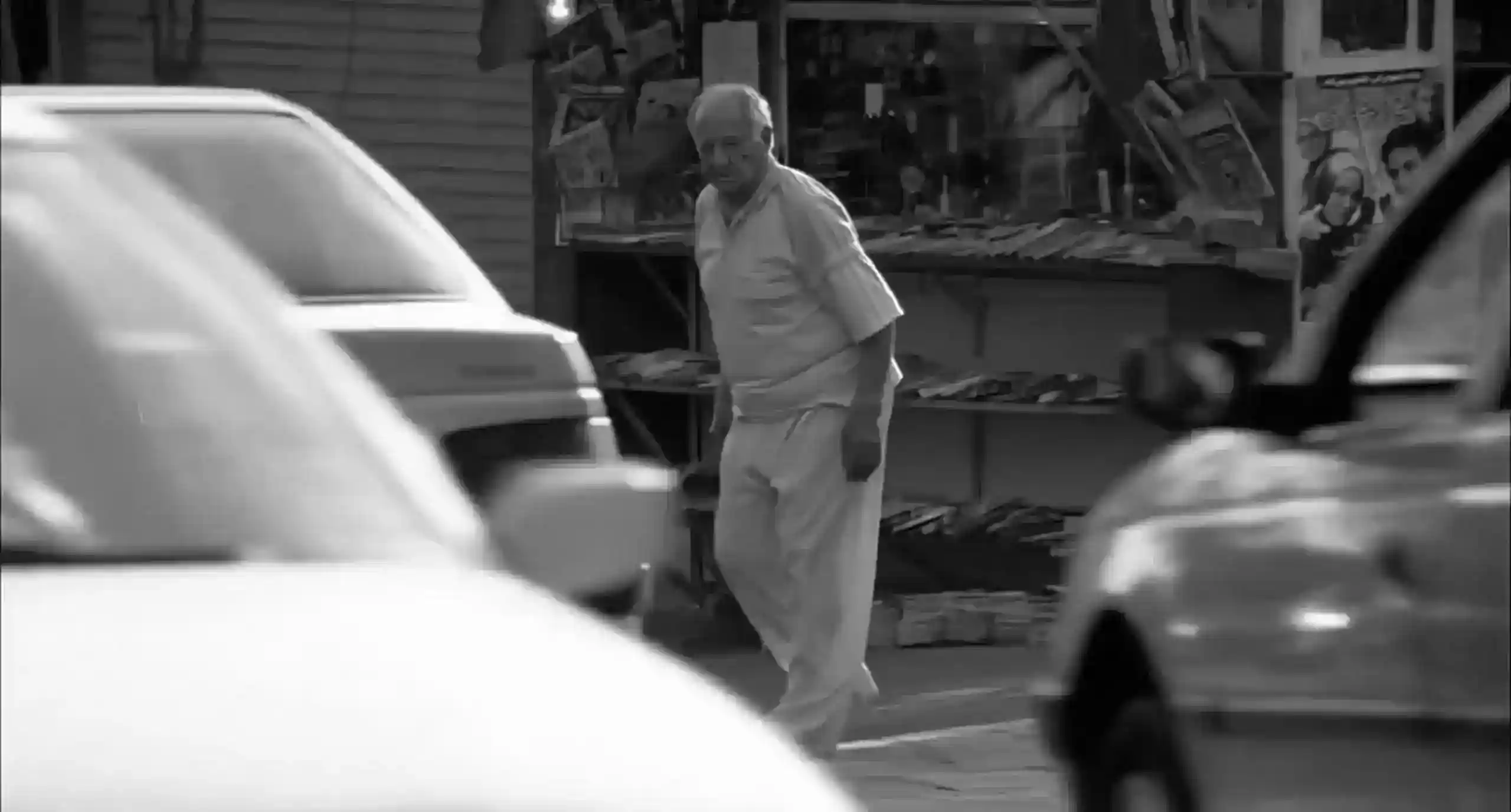
On the next workday, we see that Razieh has left Nader’s father tied up at home and gone out. A tragic conflict arises between Nader and Razieh in this scene. In her work Looking at Art with Philosophy, Ionna Kuçuradi describes the tragic as follows: “The characteristic of the values that clash in a tragic conflict is that both the destroyed and the destroying values are high and at the same time two positive values.” Razieh, realizing that her unborn child is not moving, is forced to go to the hospital. But while doing so, she unconsciously ties Nader’s father to the bed. We see that an ethical dilemma is created at this point. Razieh has made a tragic mistake (hamartia), and events have gotten out of control. We see that Nader also makes the same tragic mistake by pushing Razieh out of the door. We can say that Farhadi has benefited from the genre of Tragedy, which arises from the conflict of two positive values, in this symmetry he has created.
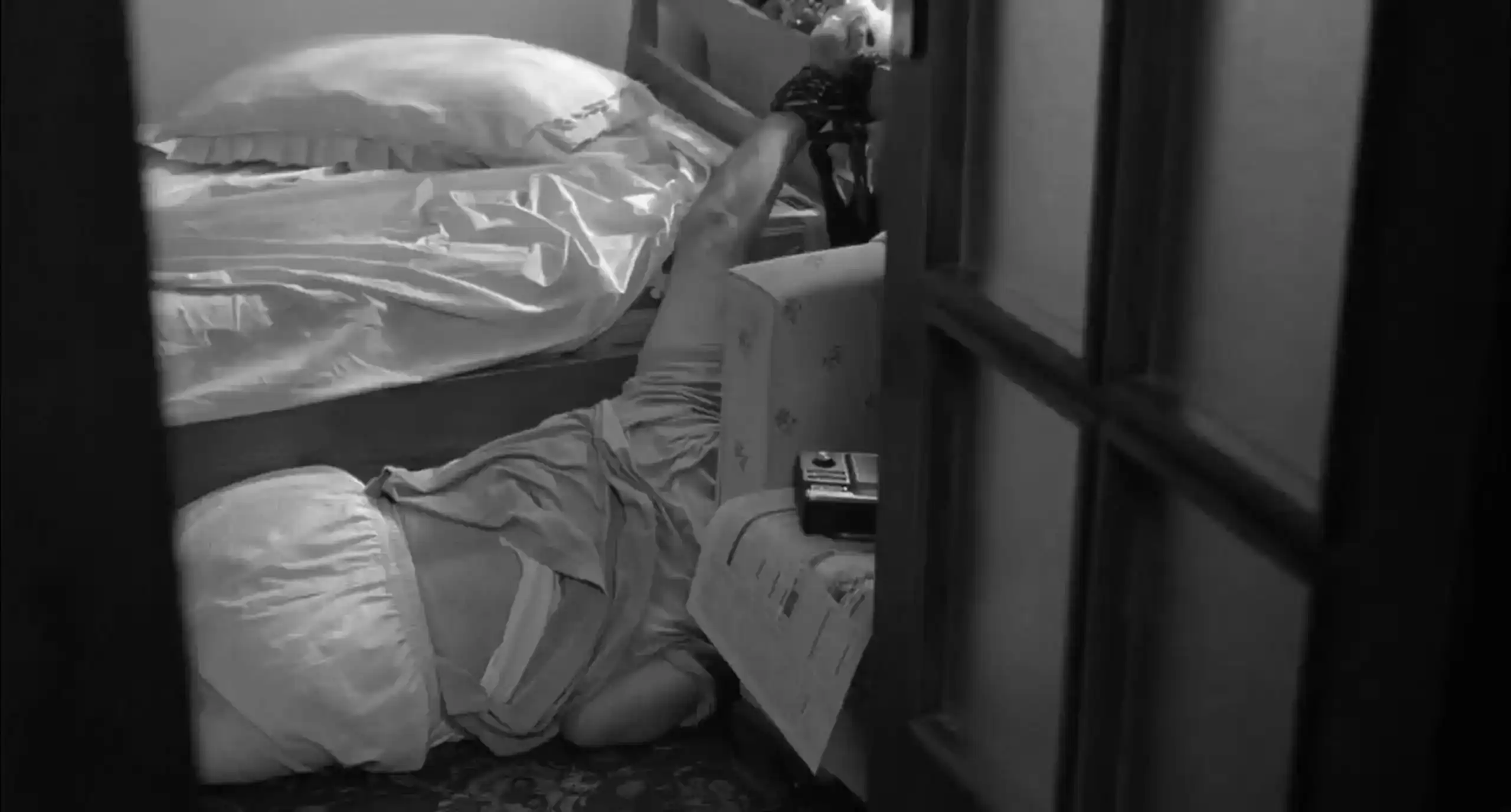
In the continuation of the film, Razieh has lost her child, and Nader’s father has had a close brush with death. For this reason, we see Nader and Razieh facing each other in court. It is not possible for the audience, who is in the position of a judge, and the judge character in the film to make a definite judgment in the face of this tragic event. Farhadi has taken a democratic attitude towards the characters and eliminated identification, one of the most important features of classical narrative.
After the court, cracks begin to appear in Nader’s family. The effect of Hodjat, in his anger over losing his child, going to Termeh’s school and accusing the teacher of false testimony is significant. Simin, thinking that Hodjat will harm Termeh, tries to persuade Nader to pay the blood money. Nader, on the other hand, wants to prove his innocence. At this time, we witness Termeh giving false testimony to protect her father. Termeh, just like Somayeh, has started to lie to protect her family and has become an adult (!).
In the final part of the film, the two families come together at Hodjat and Razieh’s house for the blood money payment. In this scene, Nader tries to make Razieh swear on the Quran to prove his innocence. This part can be seen as the climax of the film. Razieh cannot swear because she is hesitant. Hodjat, who has to turn away his creditors and thinks he has been disgraced, leaves the house in anger. Therefore, it is seen that the class conflict that has been processed since the beginning of the film has harmed both families. There is no winner.
In the finale of the film, we see that an open-ended choice has been made in the story. Termeh’s choice between her mother and father in the courtroom is not clear. Farhadi has tied a new knot at the end of this scene and has not resolved it. Afterwards, the credits start to roll over the image of Nader and Simin waiting for Termeh’s decision in the courthouse corridors. There are many people and their stories in the corridor, just like Nader and Simin. A Separation has only dealt with the story of two of these people waiting in the corridor.
Table 3: The place of “A Separation” in the narrative style table:
| Style | Classical Narrative | Modern Narrative |
|---|---|---|
| Style | Plot-driven | Style-driven |
| Fictional Dimension | Coherent | Coherent |
| Plot | Based on Cause-Effect (No gaps) | Episodic but relational |
| Closed story type | Open-ended and with a new beginning (spiral system) | |
| Character Construction | Psychologically clear and distinct | Psychologically definable but complex |
| Action-based and goal-oriented | Adapting to a situation; based on attitudes and thoughts | |
| Conflict | Specific and external world-focused. Clear. | Structural: focused on social relations. Vague. |
BIBLIOGRAPHY
-
Farhadi, A. (Director). (2011). A Separation (Jodaeiye Nader Az Simin) [Motion Picture].
-
As quoted by Melike Günhan from Godfrey Cheshire, “Scenes From a Marriage”, Film Comment, Vol.48, No.1, (January/February 2012), p.62.
-
According to Scheler, values, in terms of their bearers, can be divided into three: values of the person (moral values), values of the living, and values of the things that bear value. In terms of degree, the first set of values is called “higher values,” and the second and third are called “lower values.” He also divides values into positive and negative values; every value has its opposite (beautiful-ugly, right-wrong, etc.). As quoted by Ionna Kuçuradi from Max Scheler, Der Formalismus in der Ethik und die materiale Wertethik.
-
“Hamartia (Gr.): In tragedy, the error arising from not being able to perceive or understand the situation, and its development; according to Aristotle, the cause of the bifurcation in tragedy is this error.” Taner, H., Nutku, Ö., & And, M. (1966). Dictionary of Theater Terms. Istanbul: Turkish Language Association Publications.